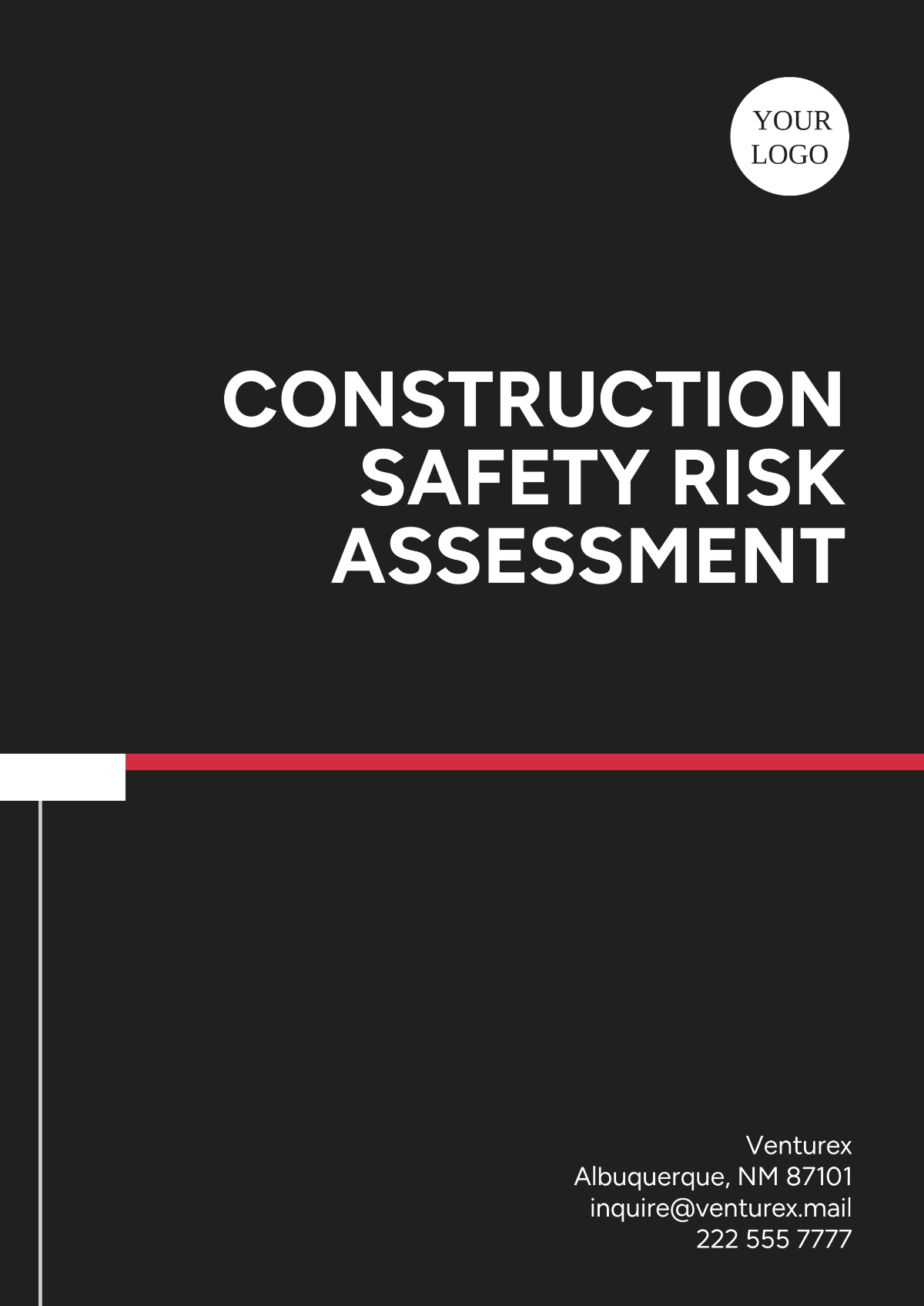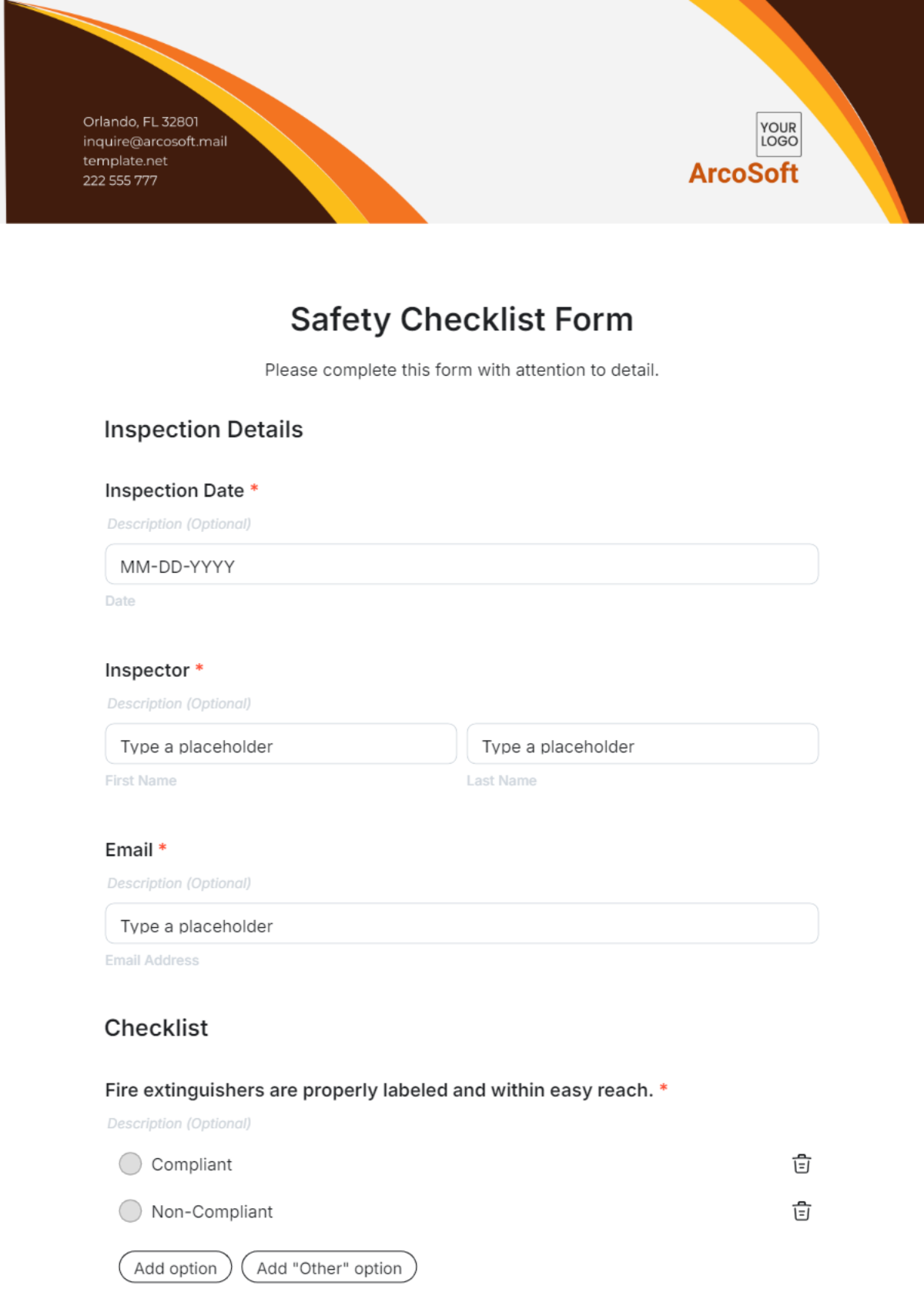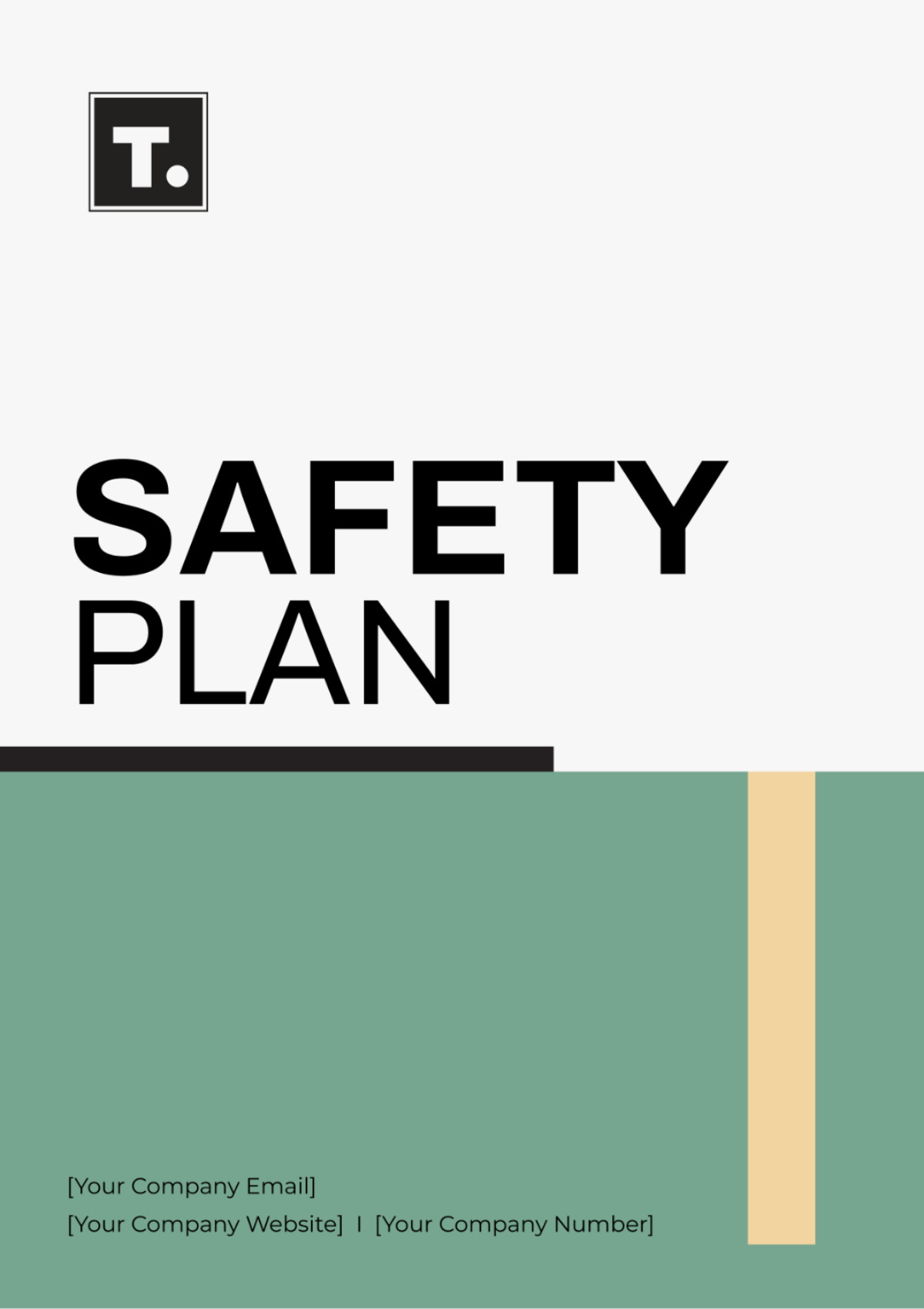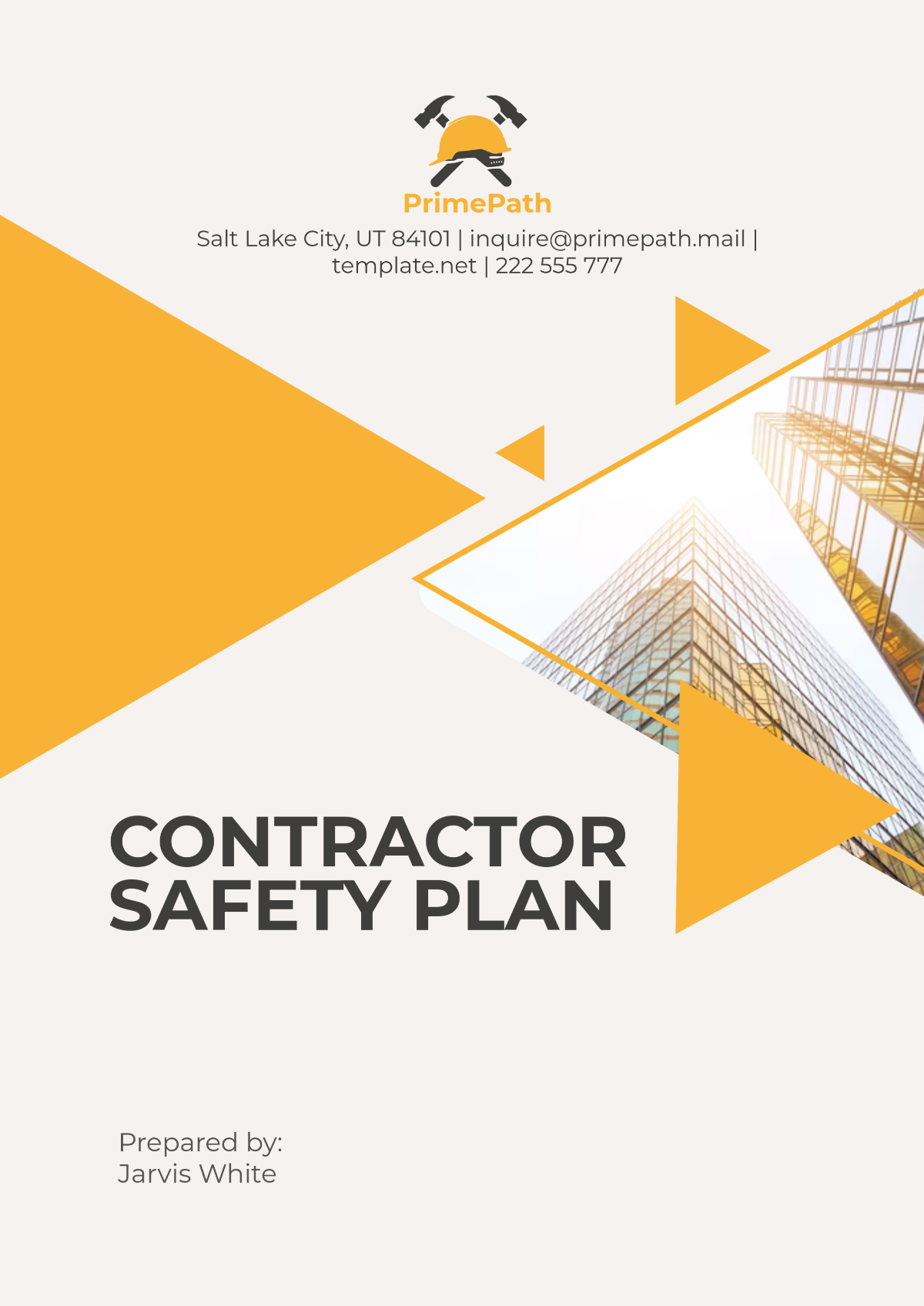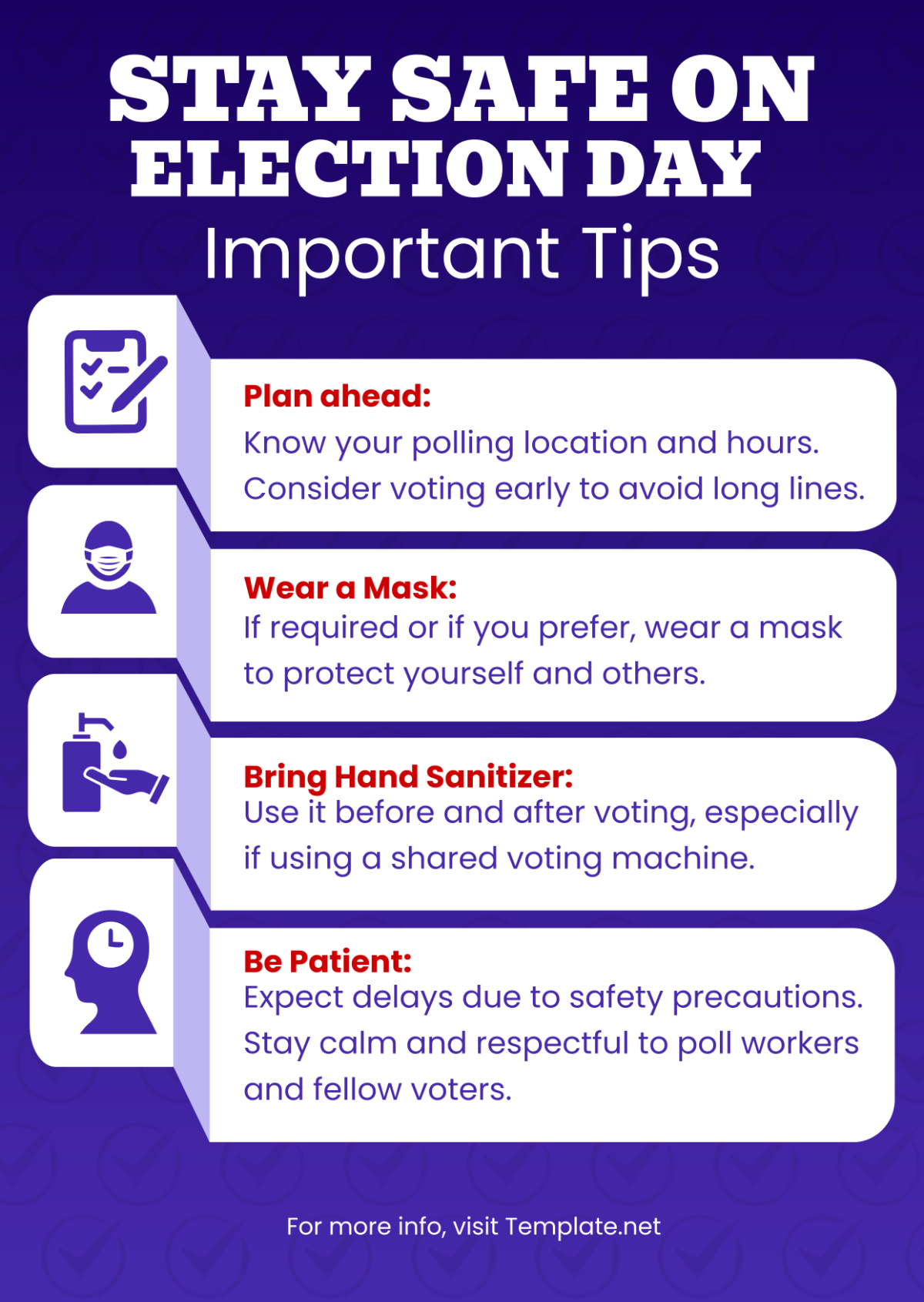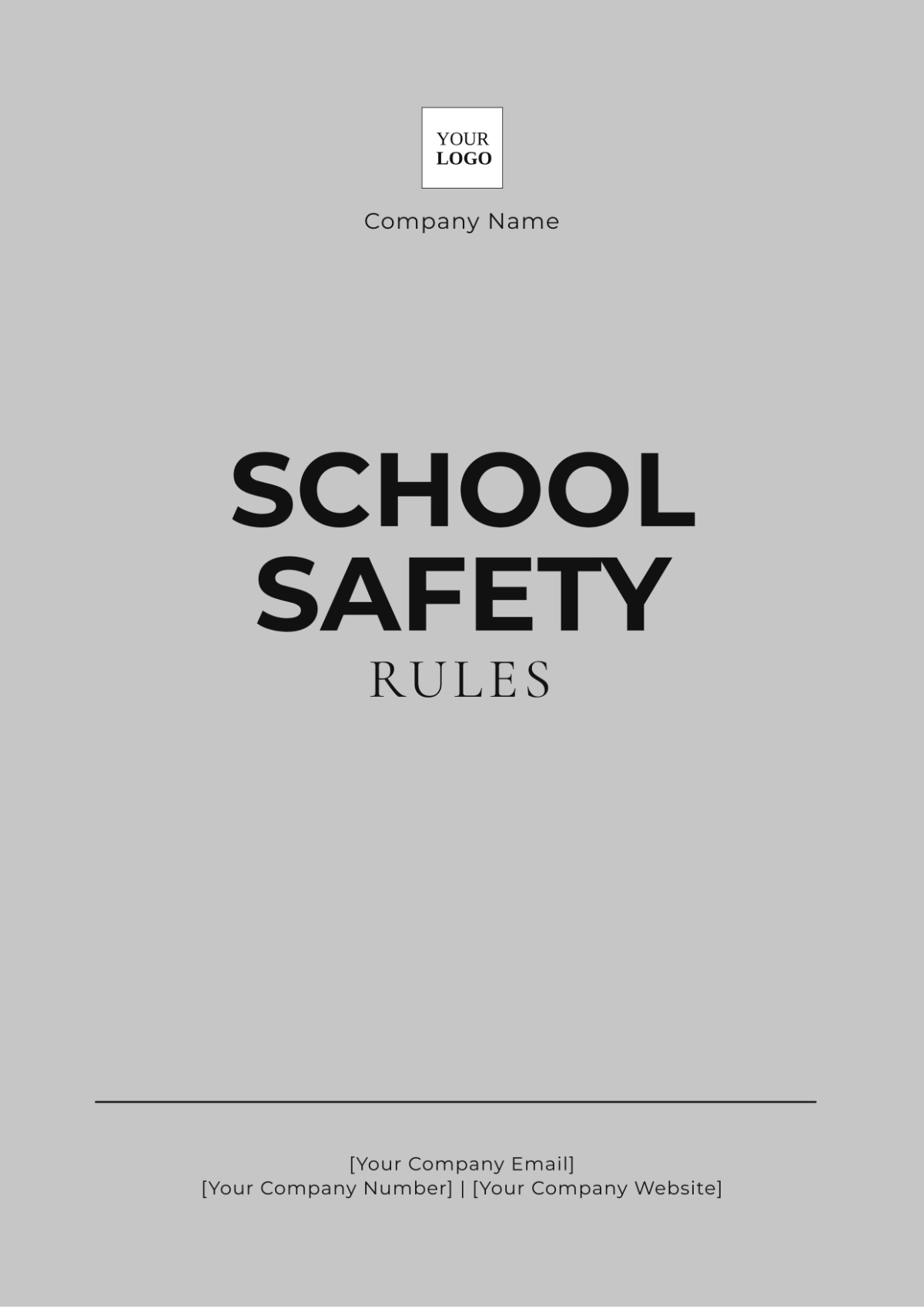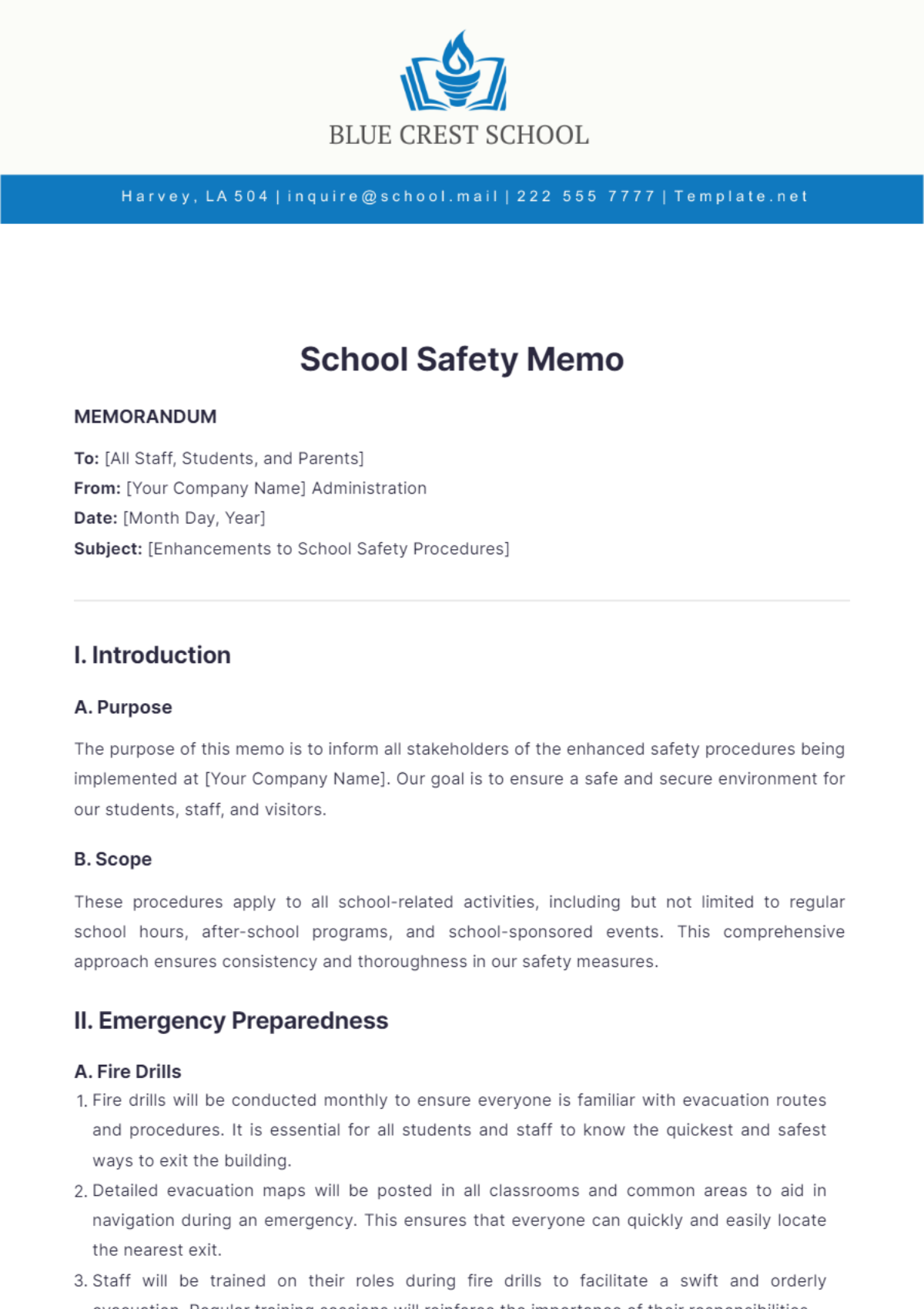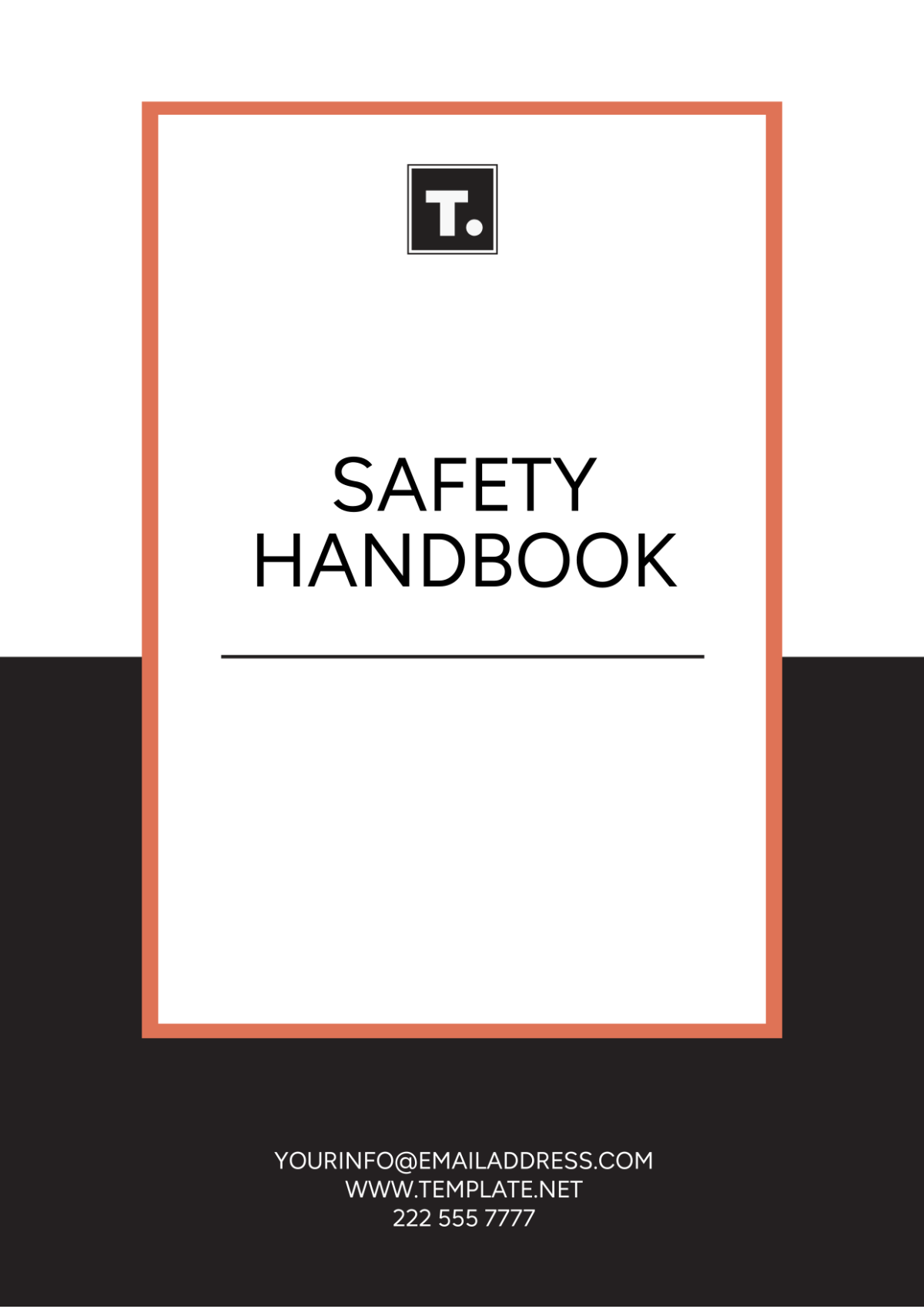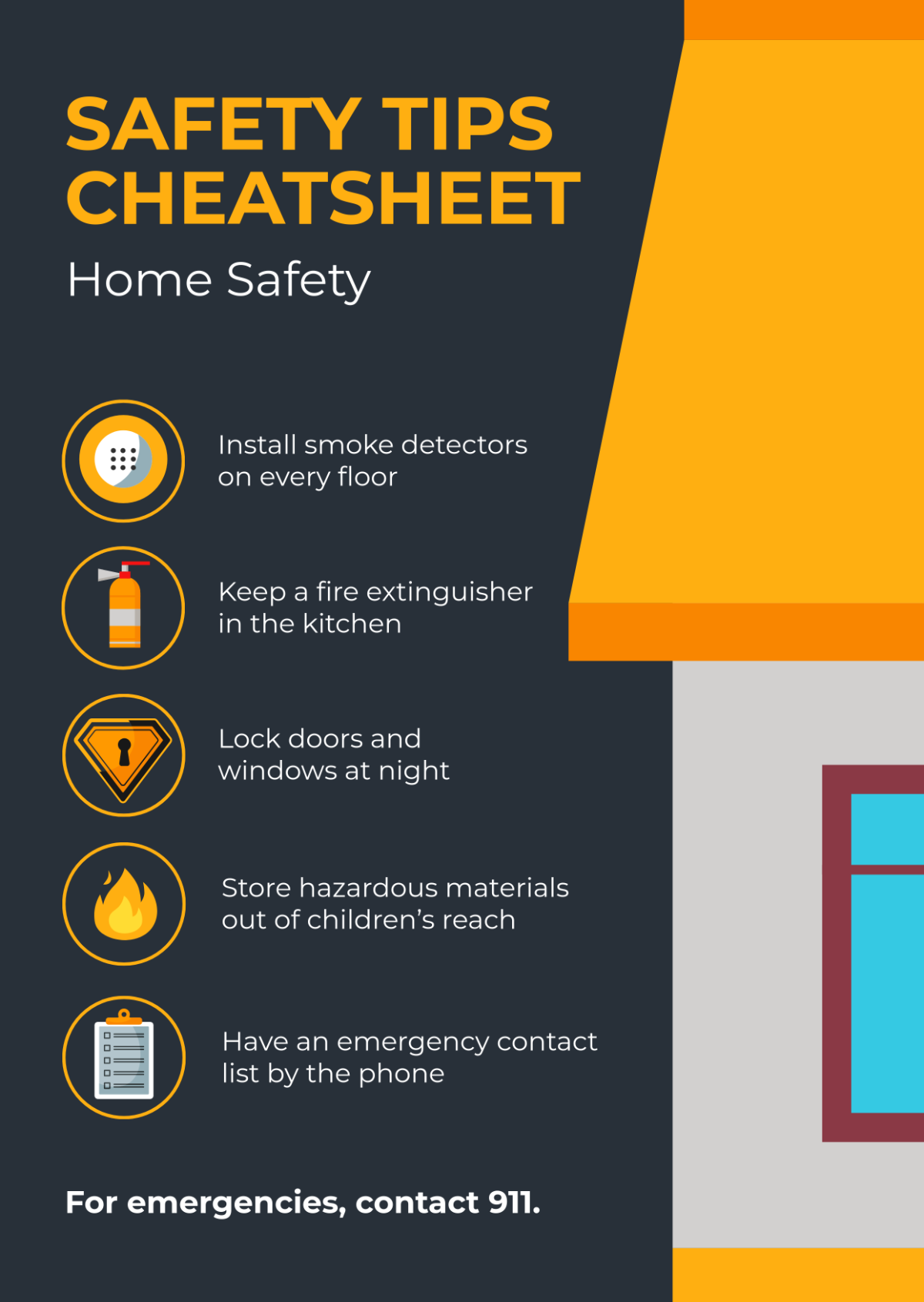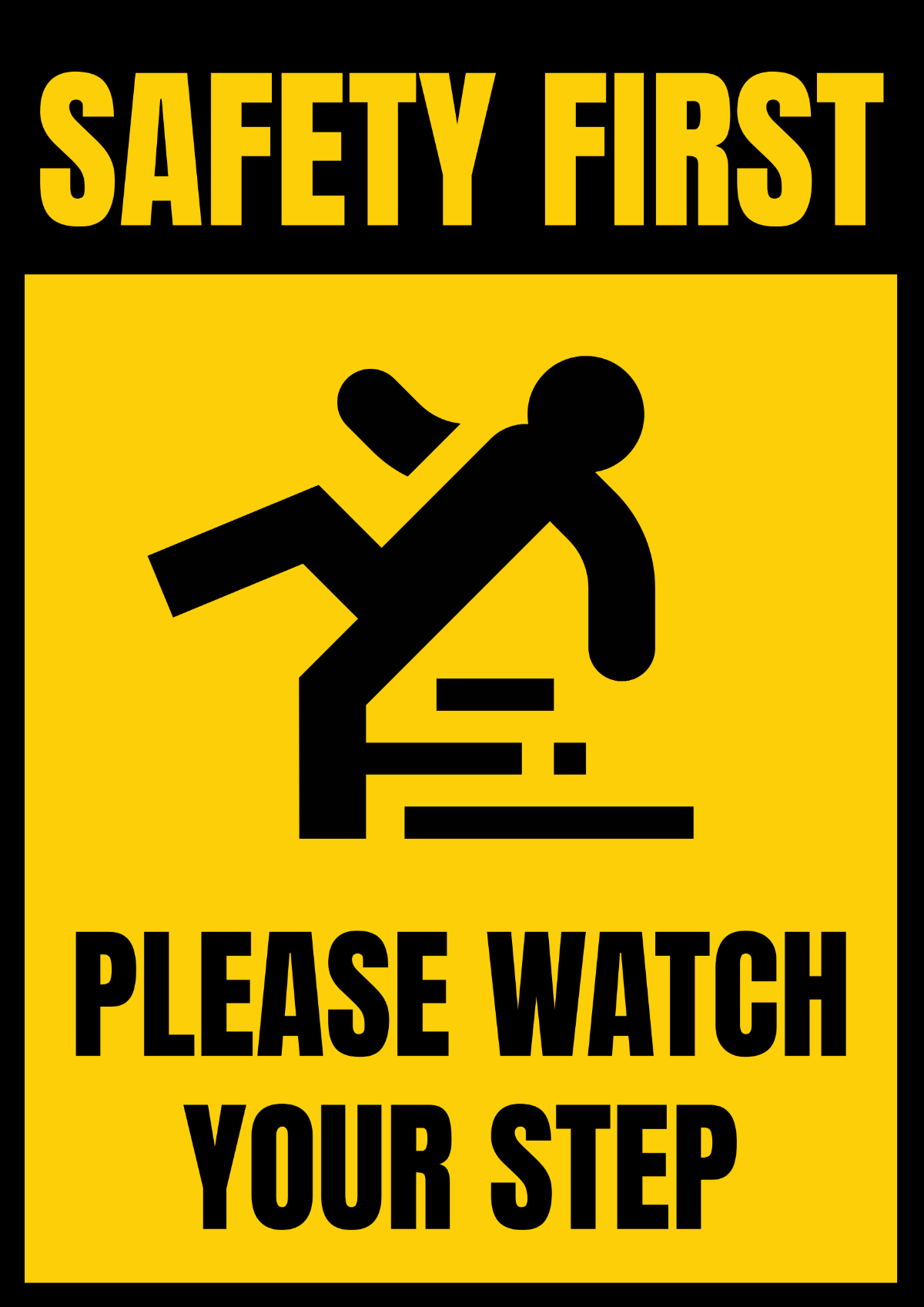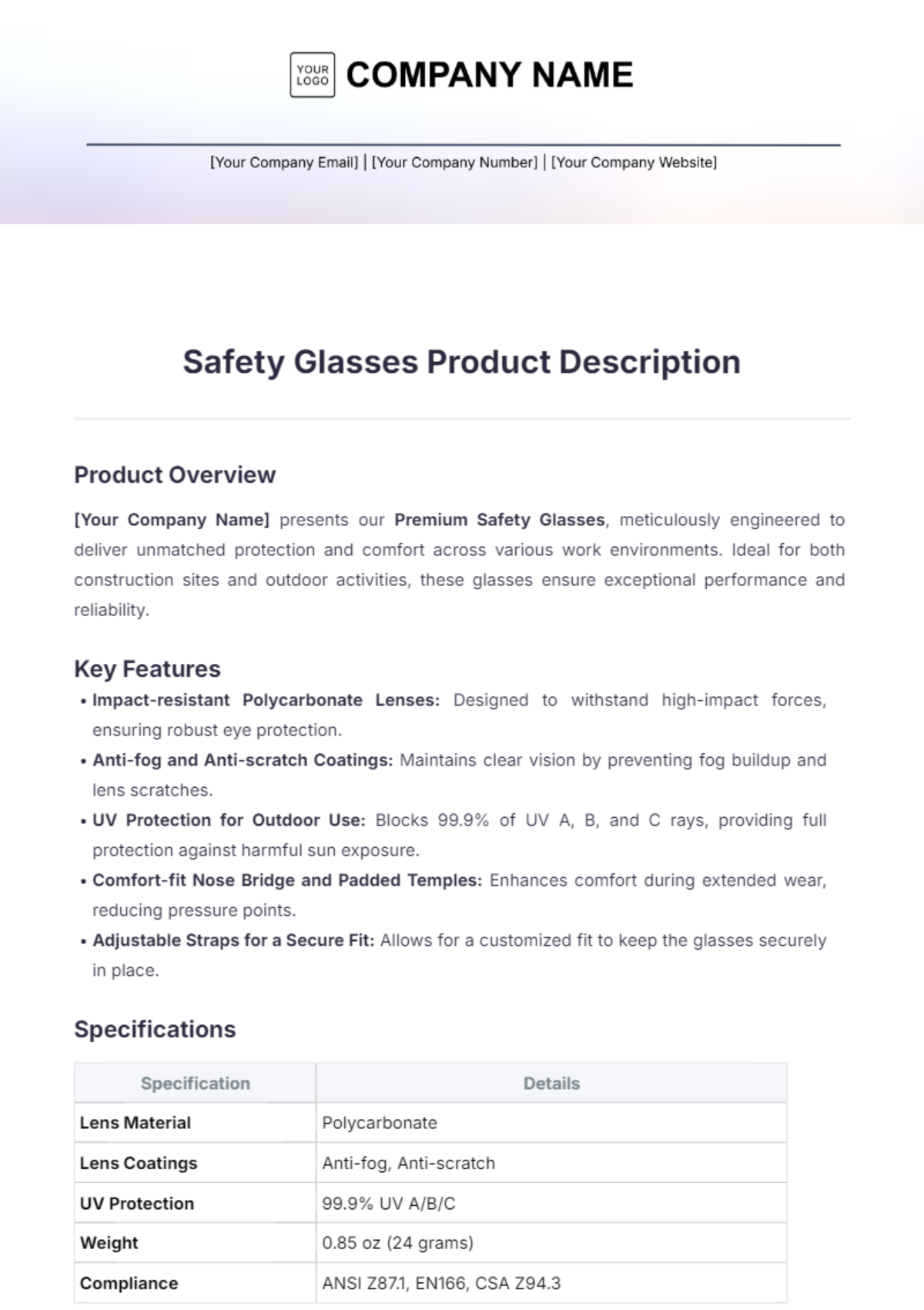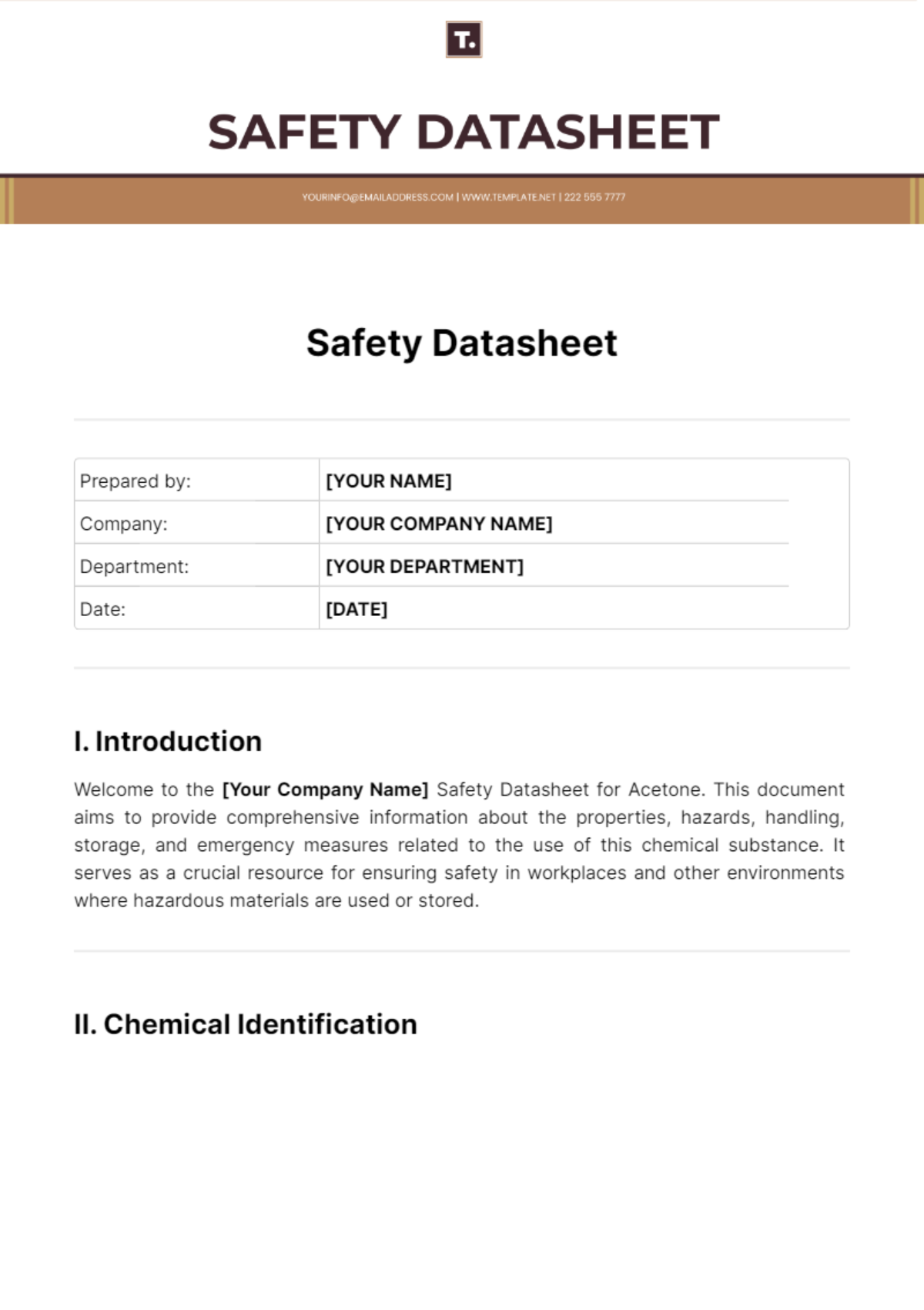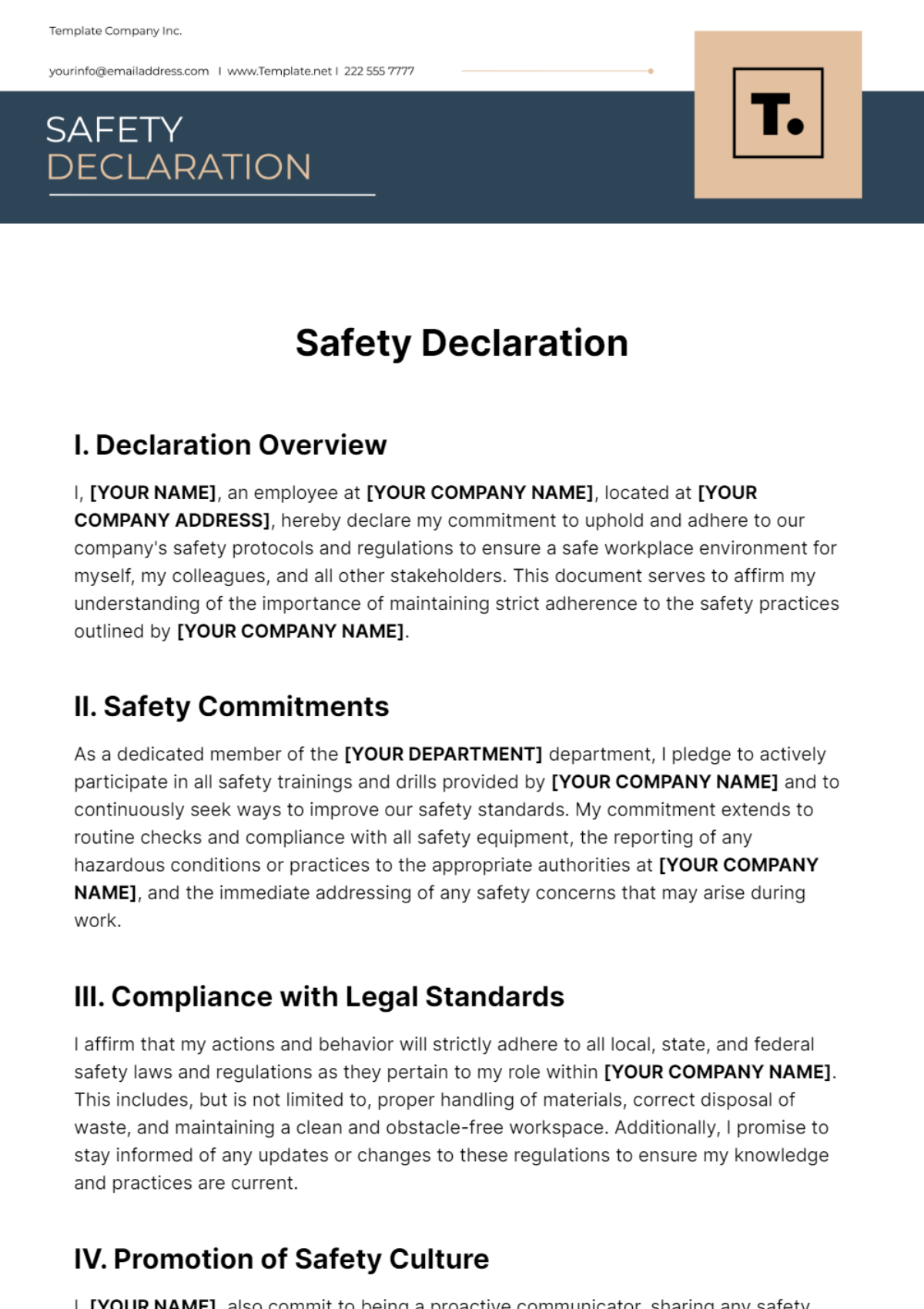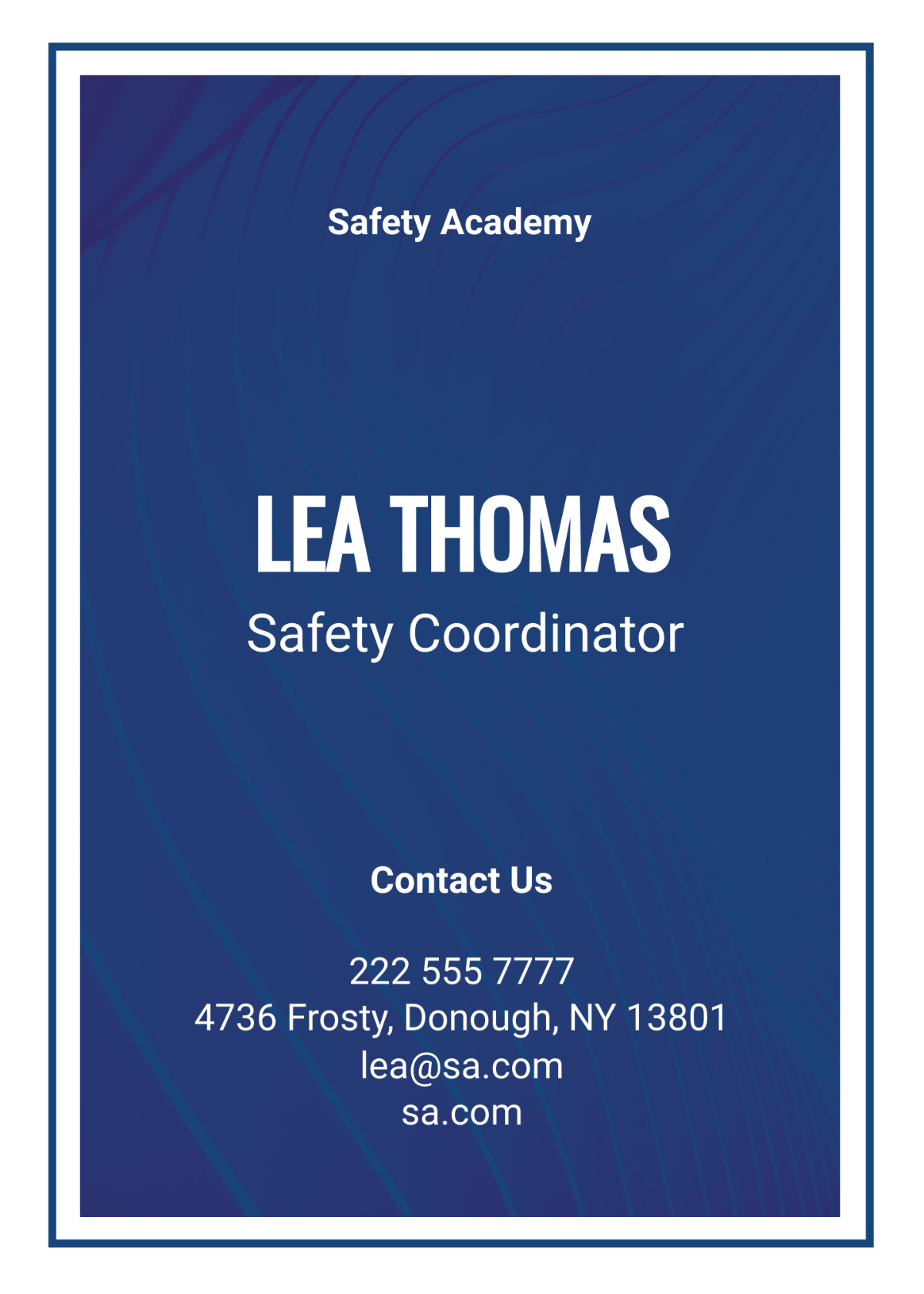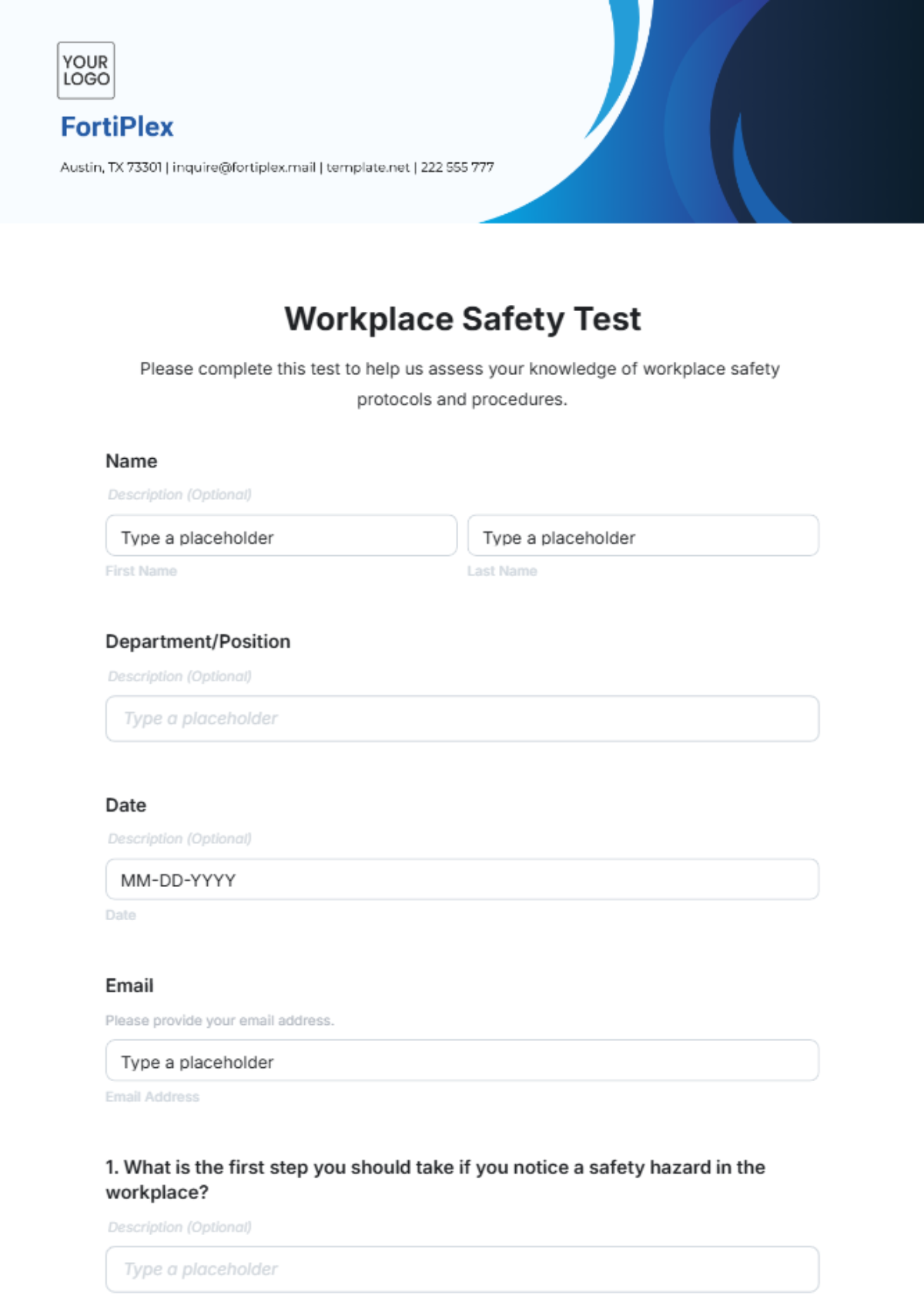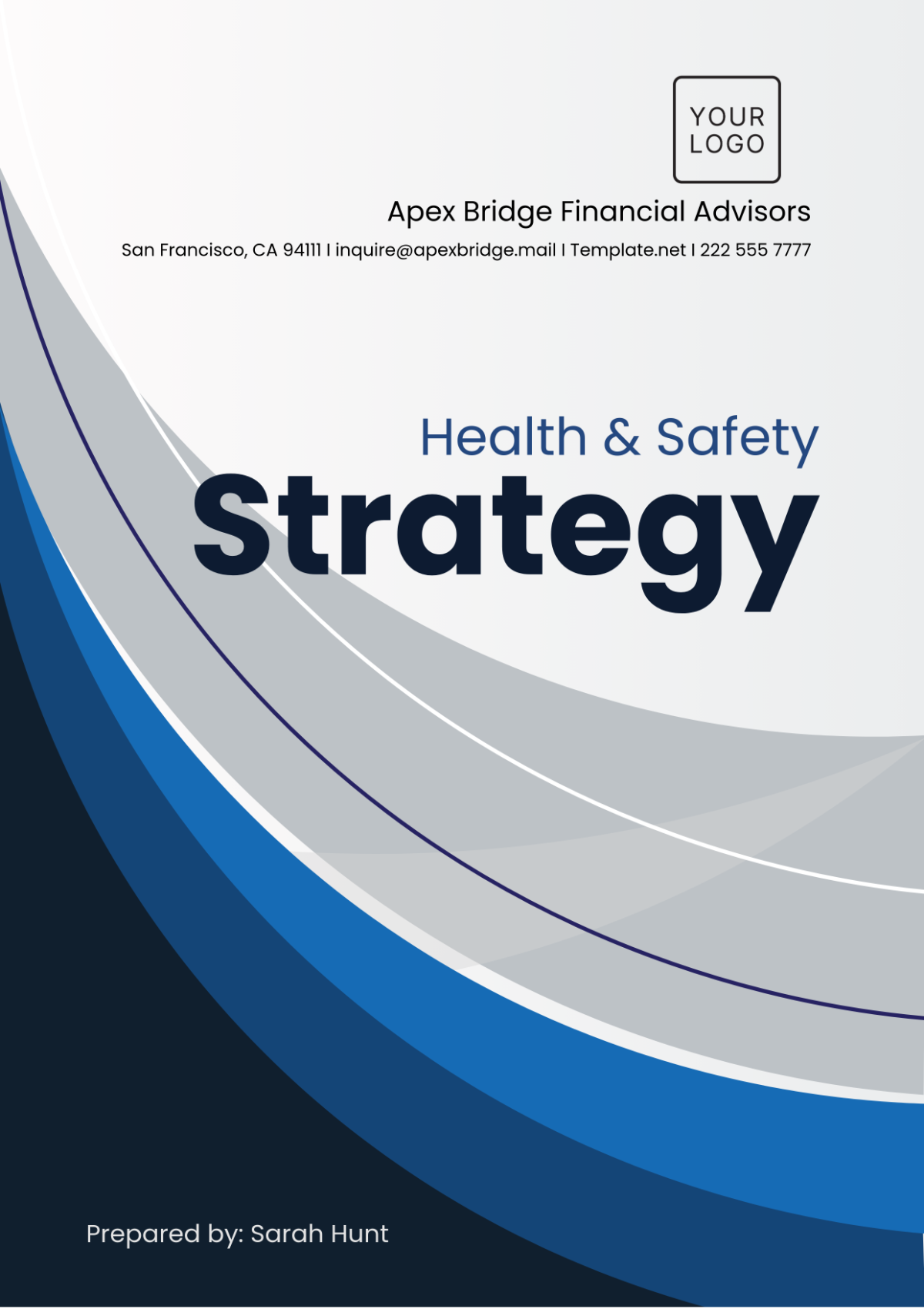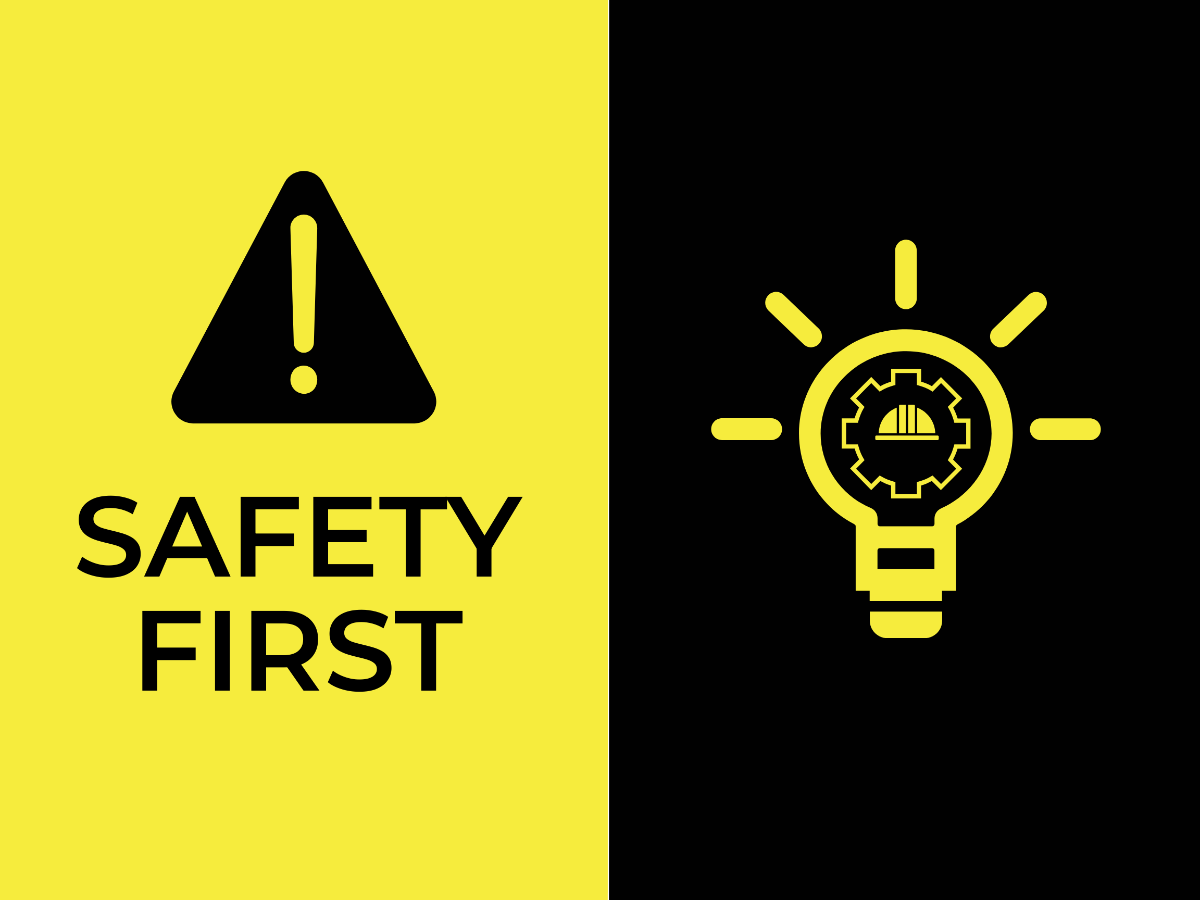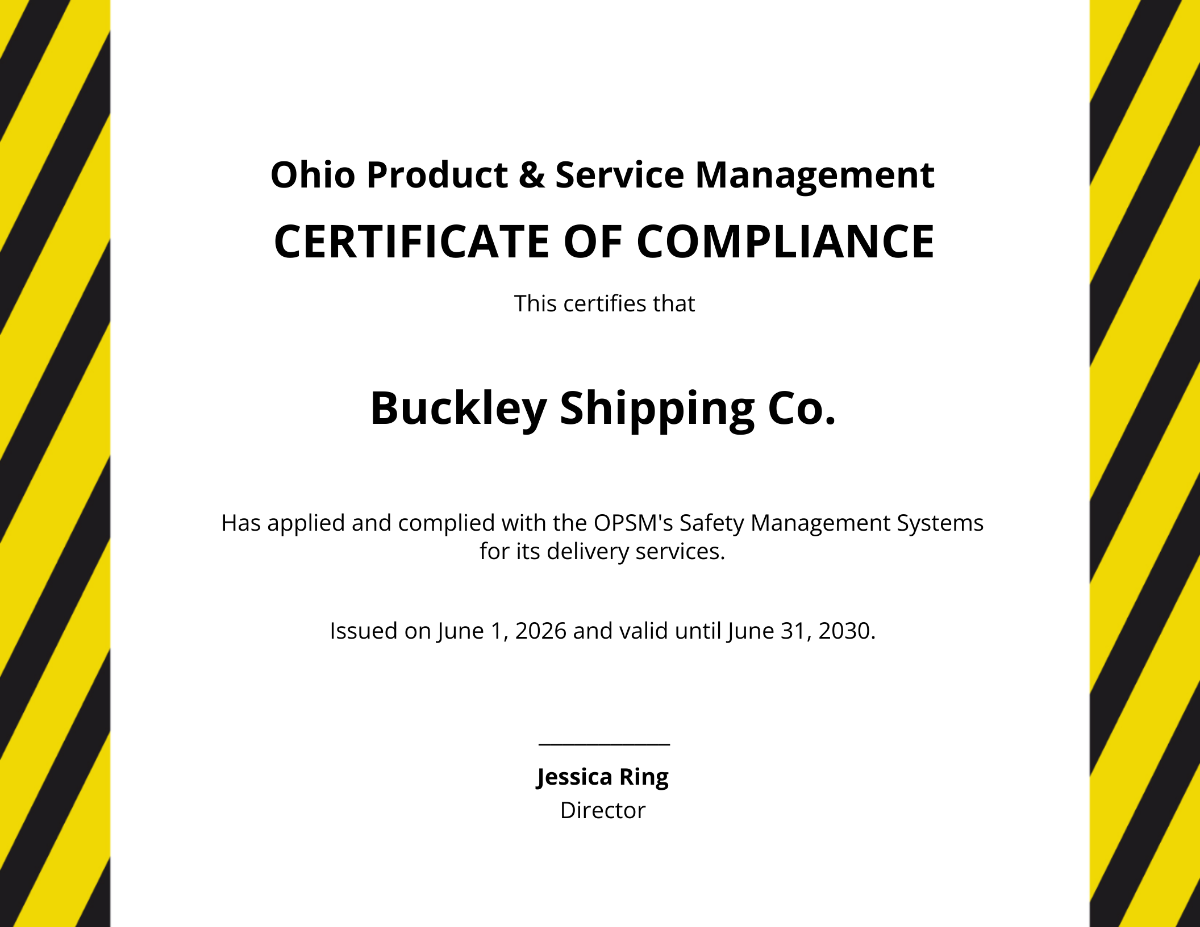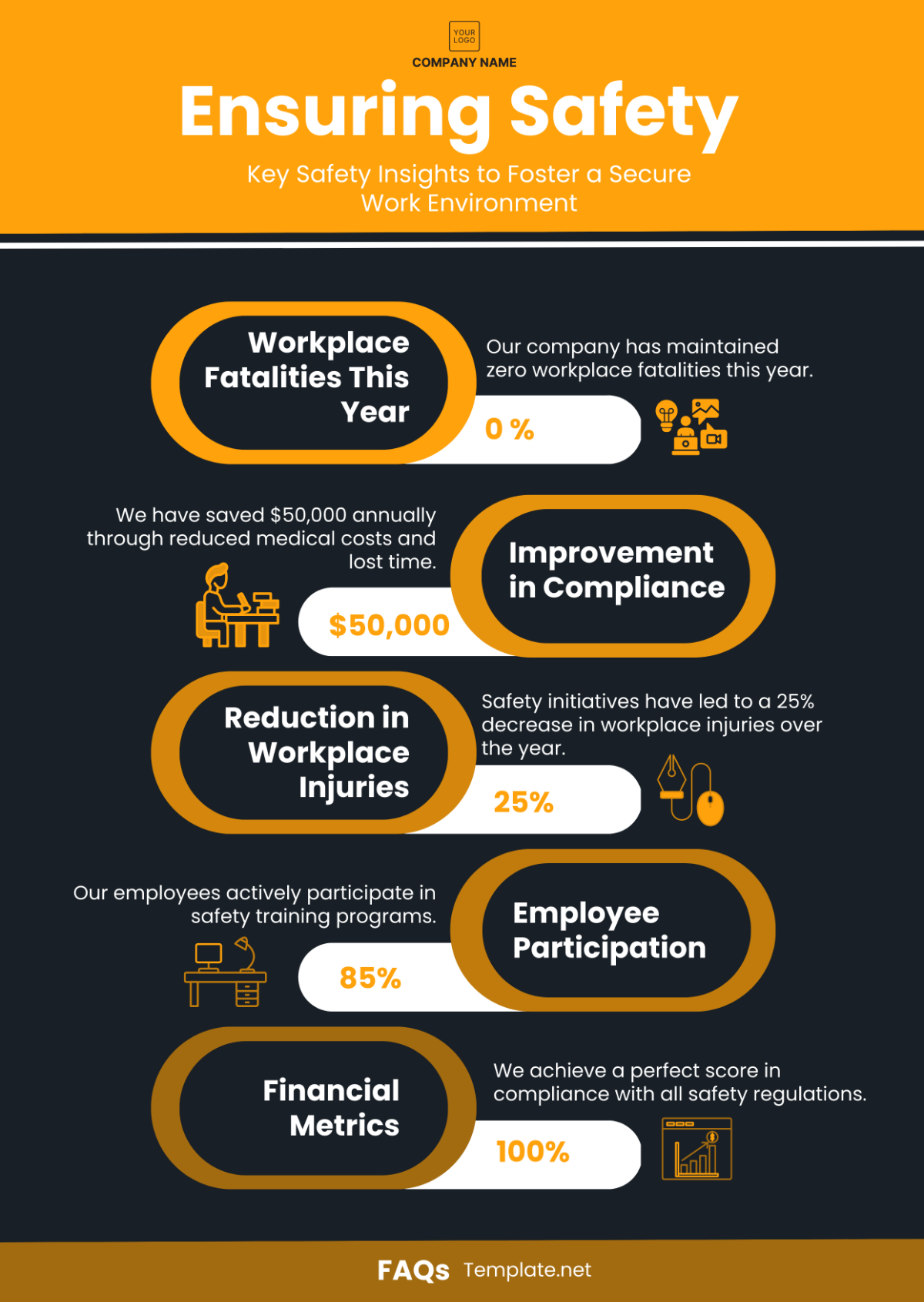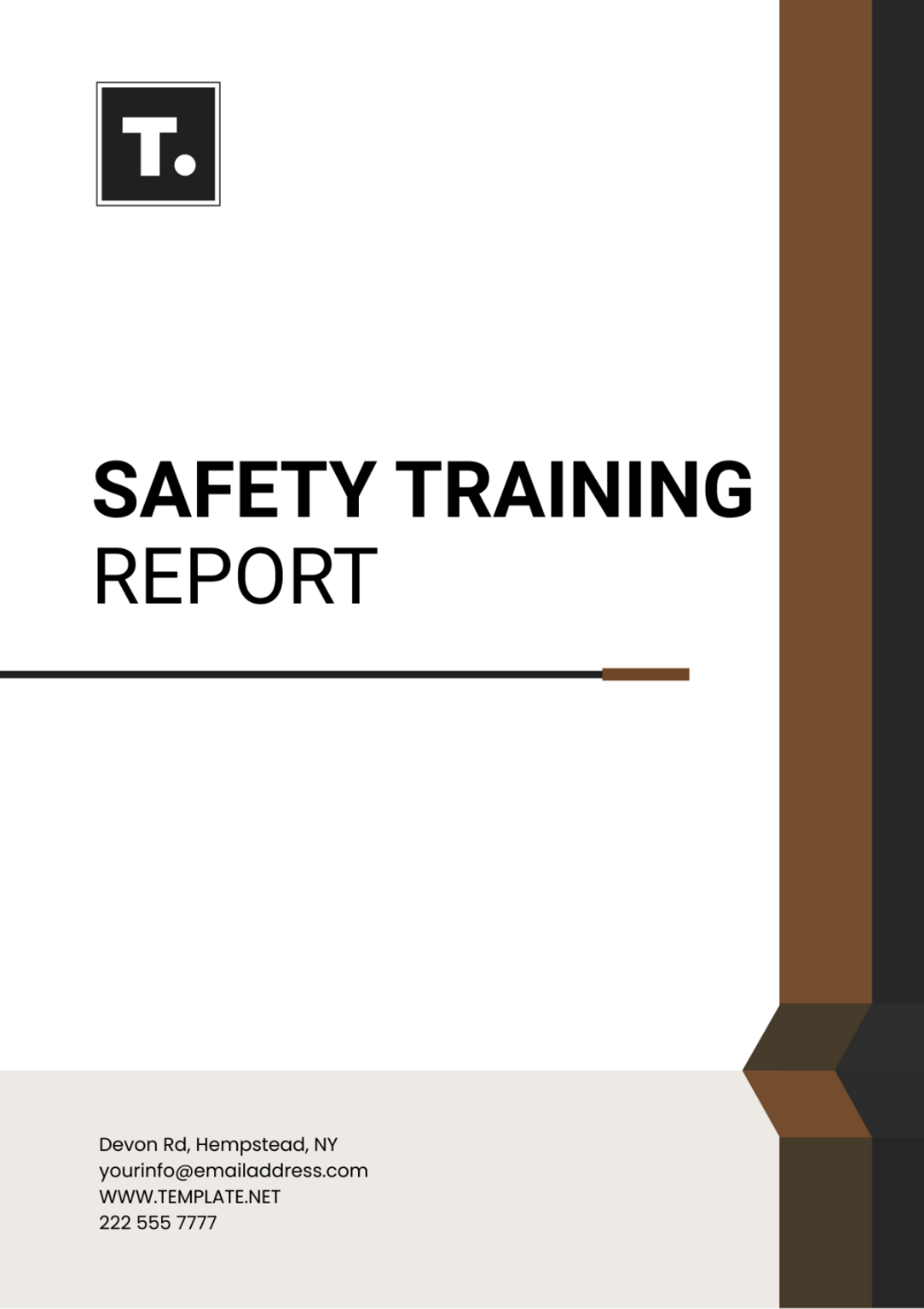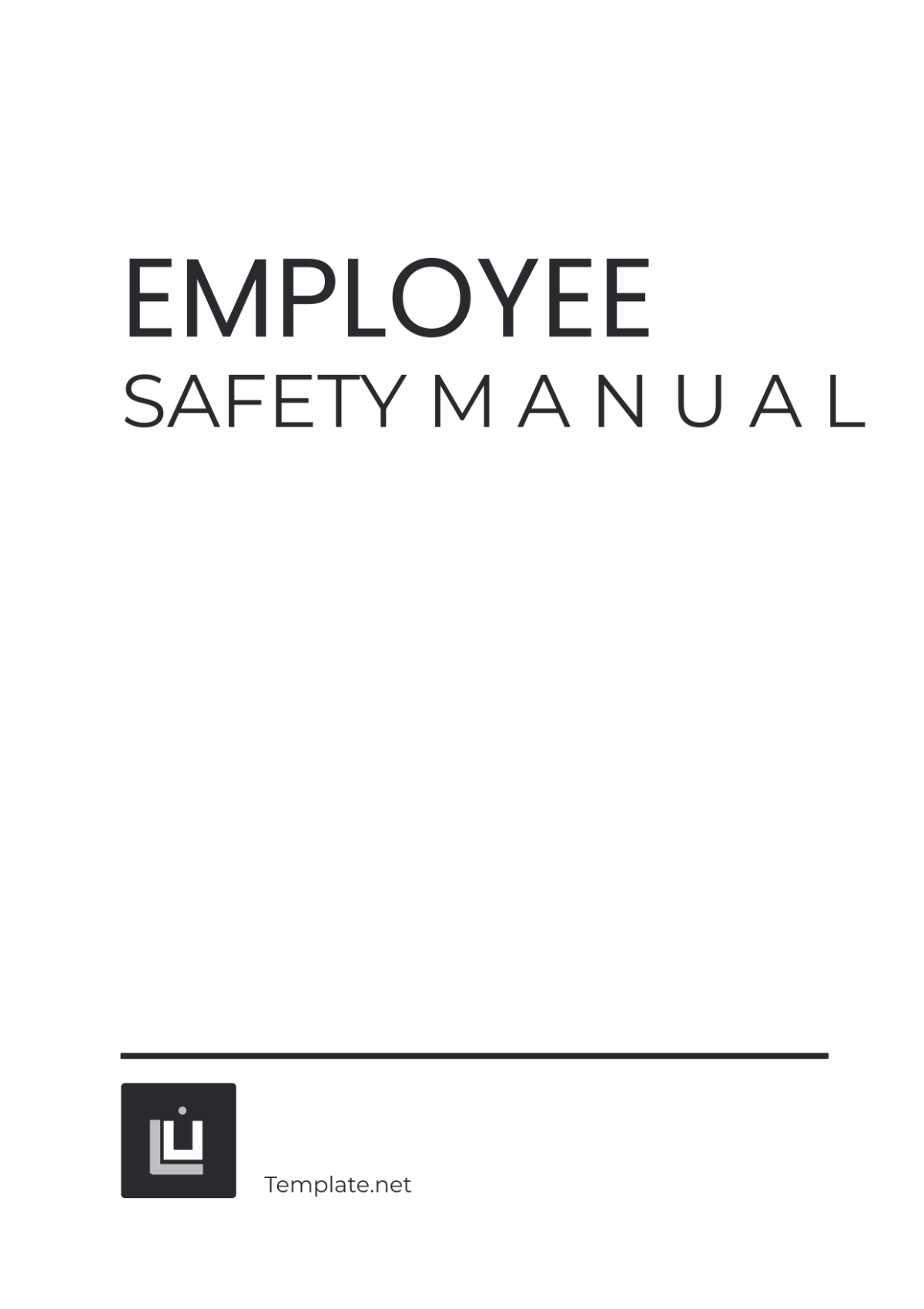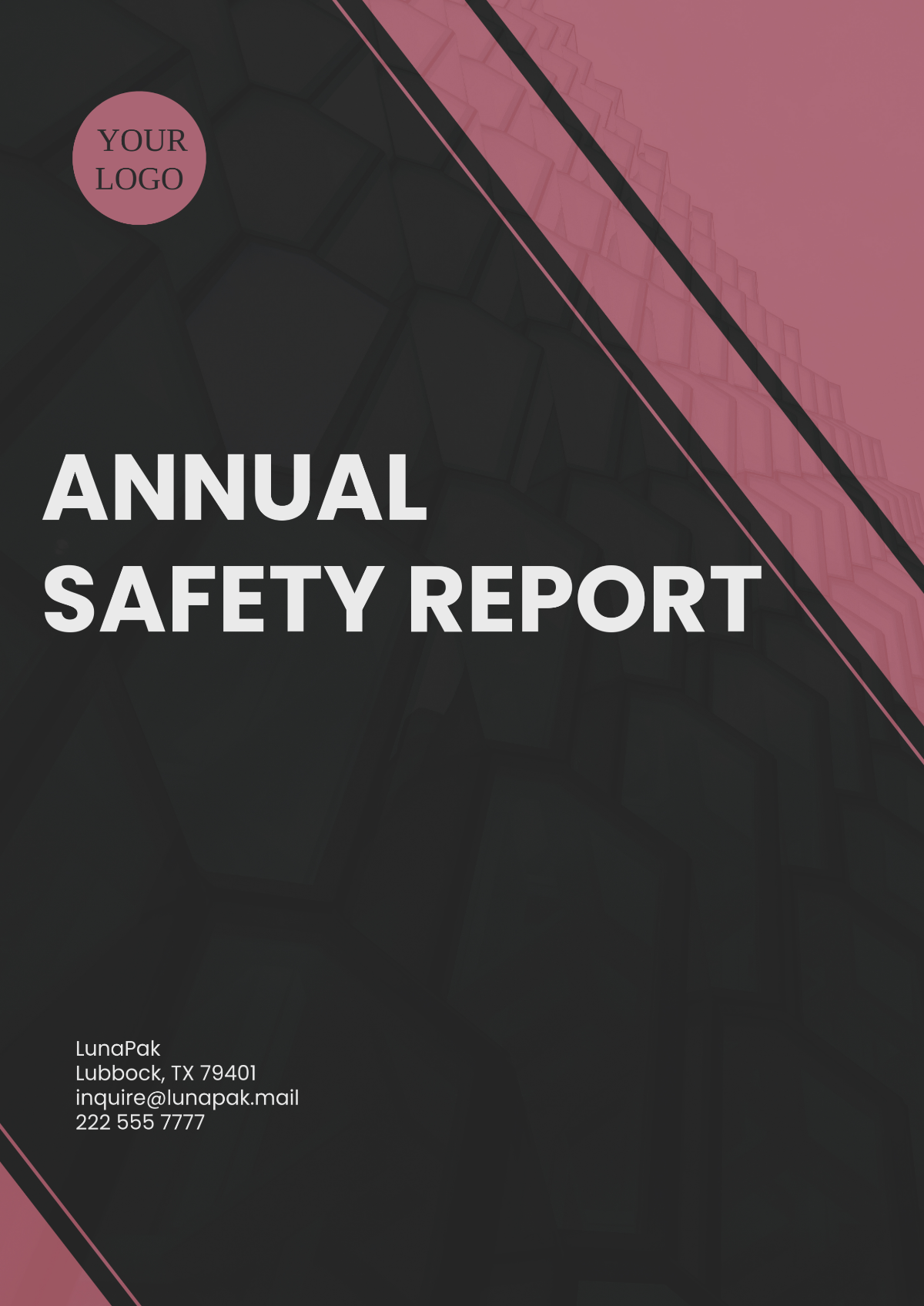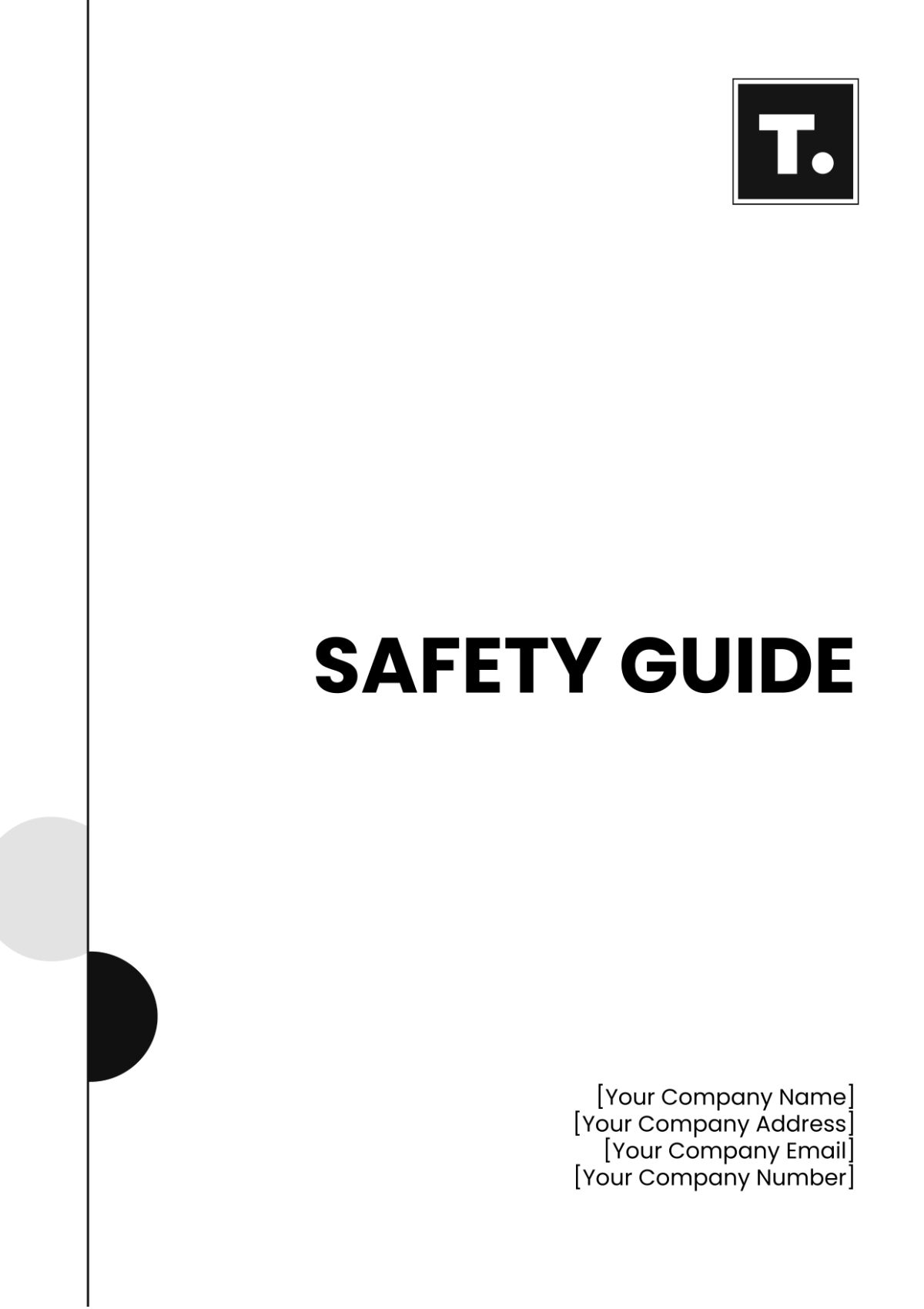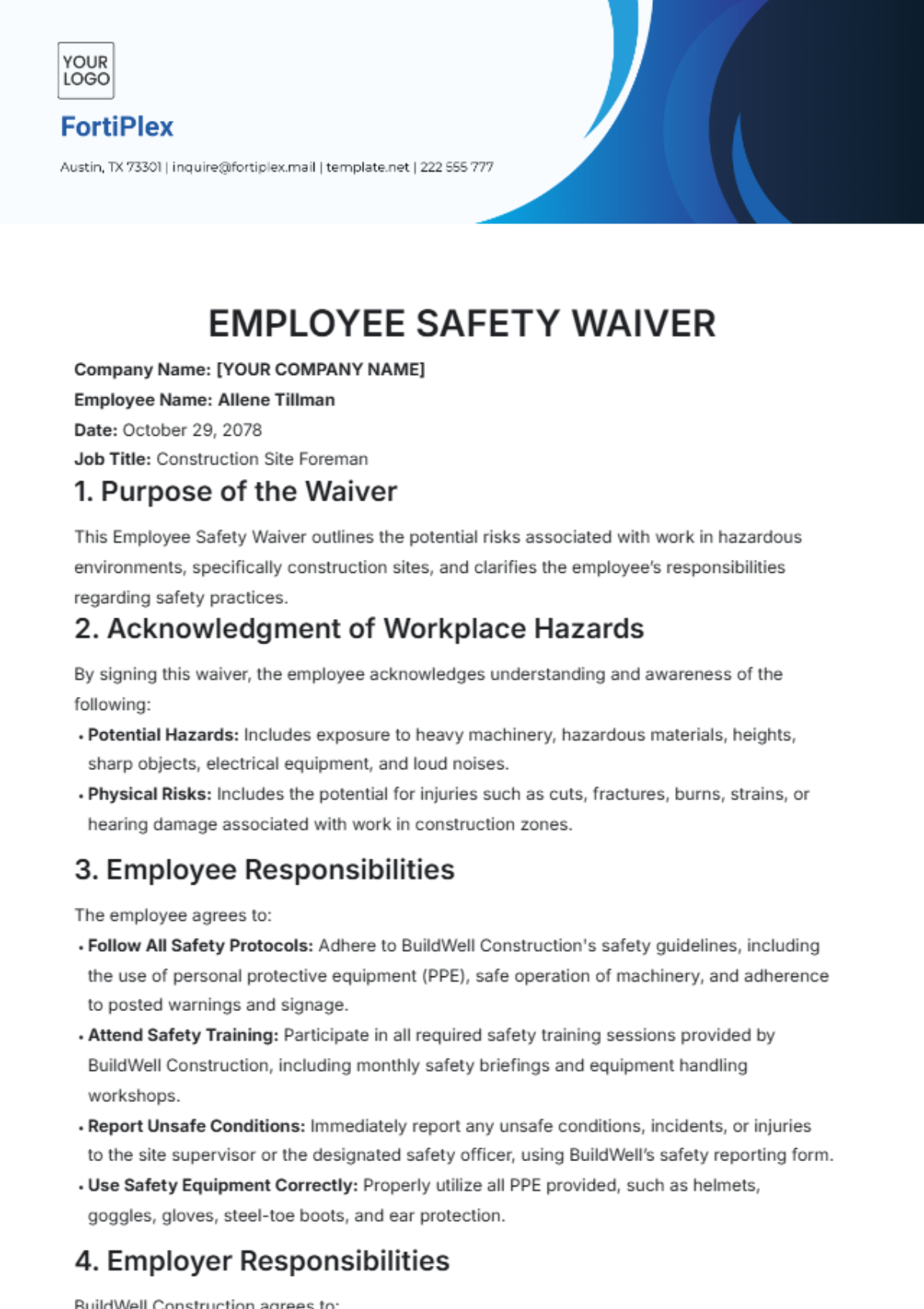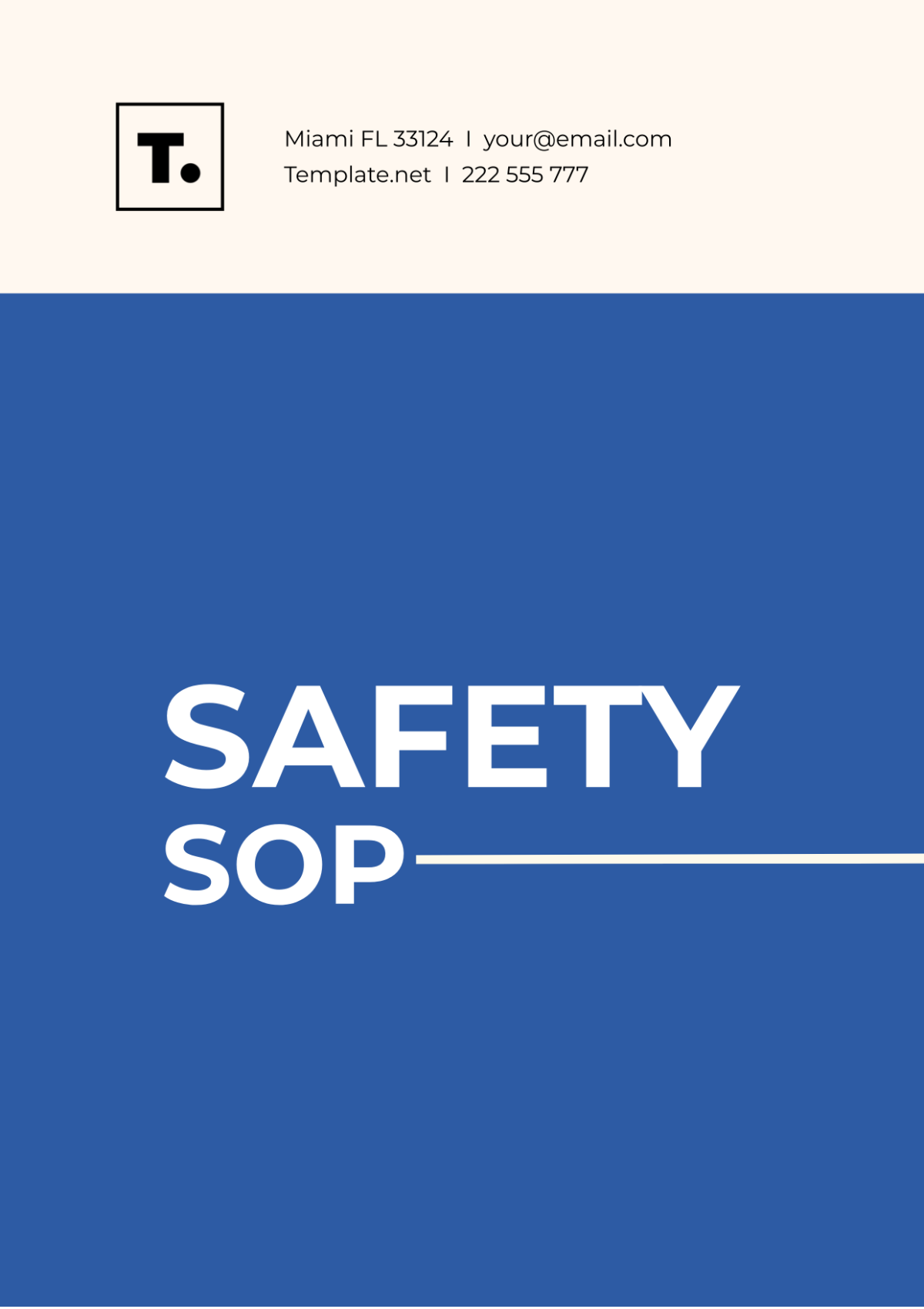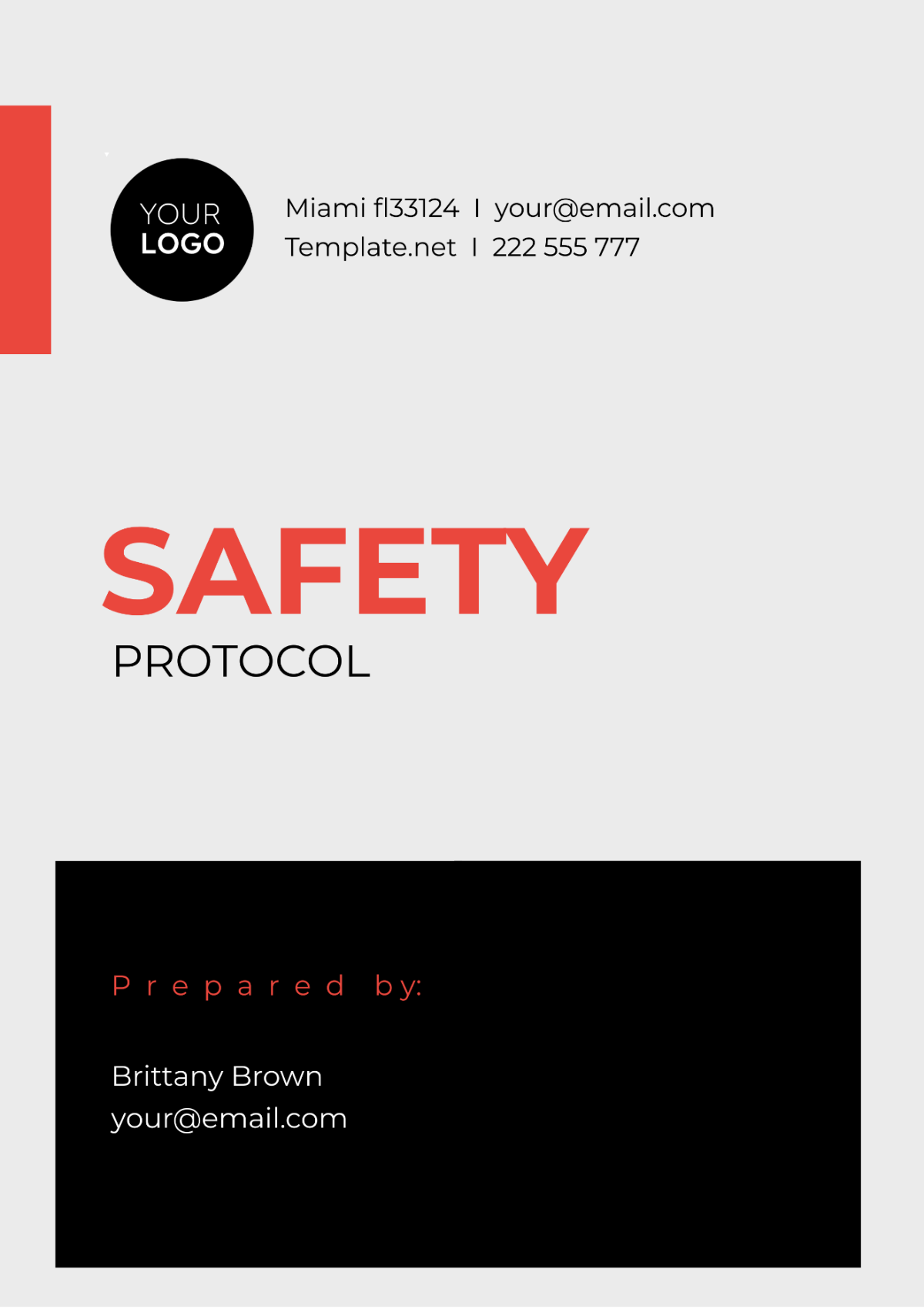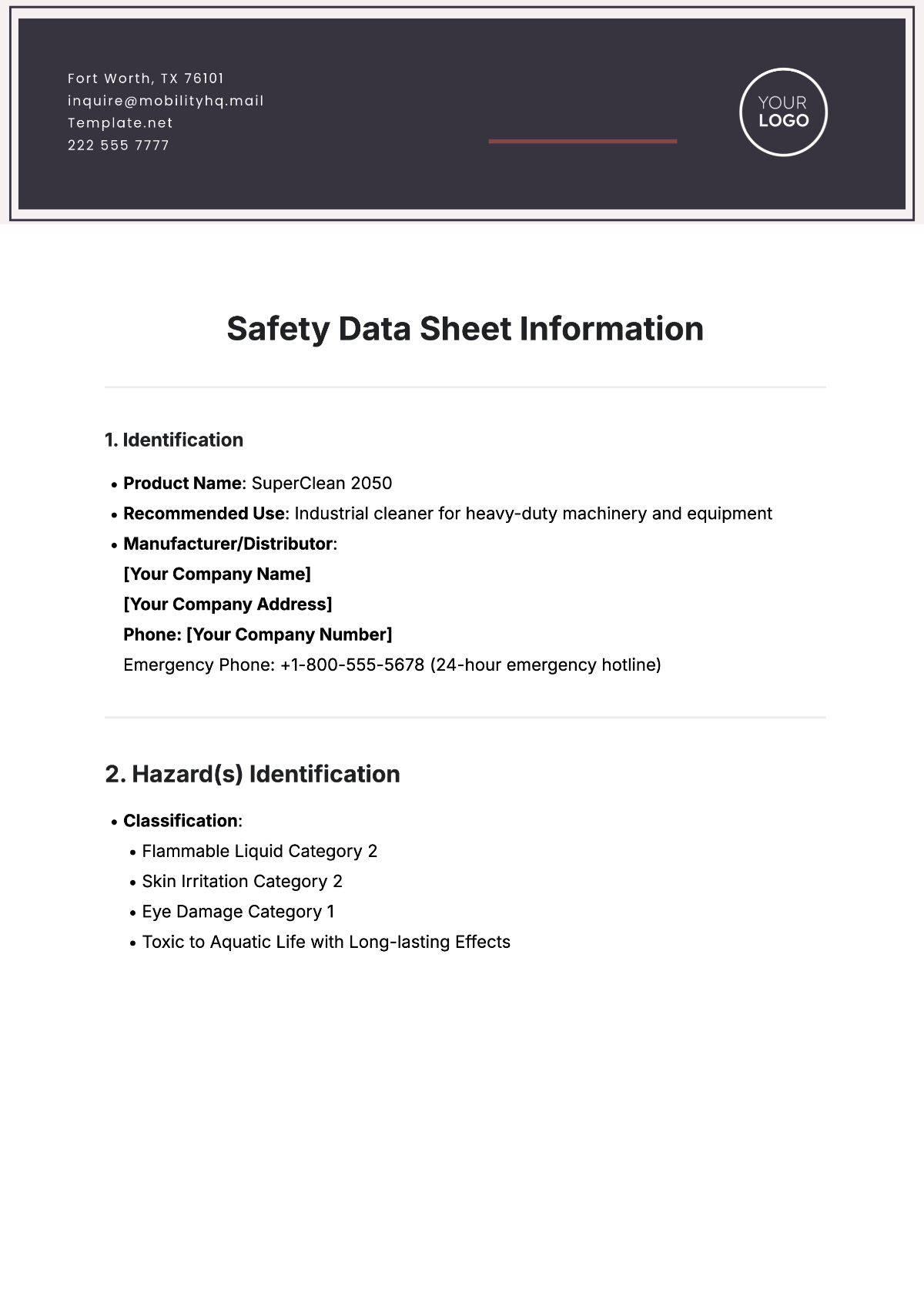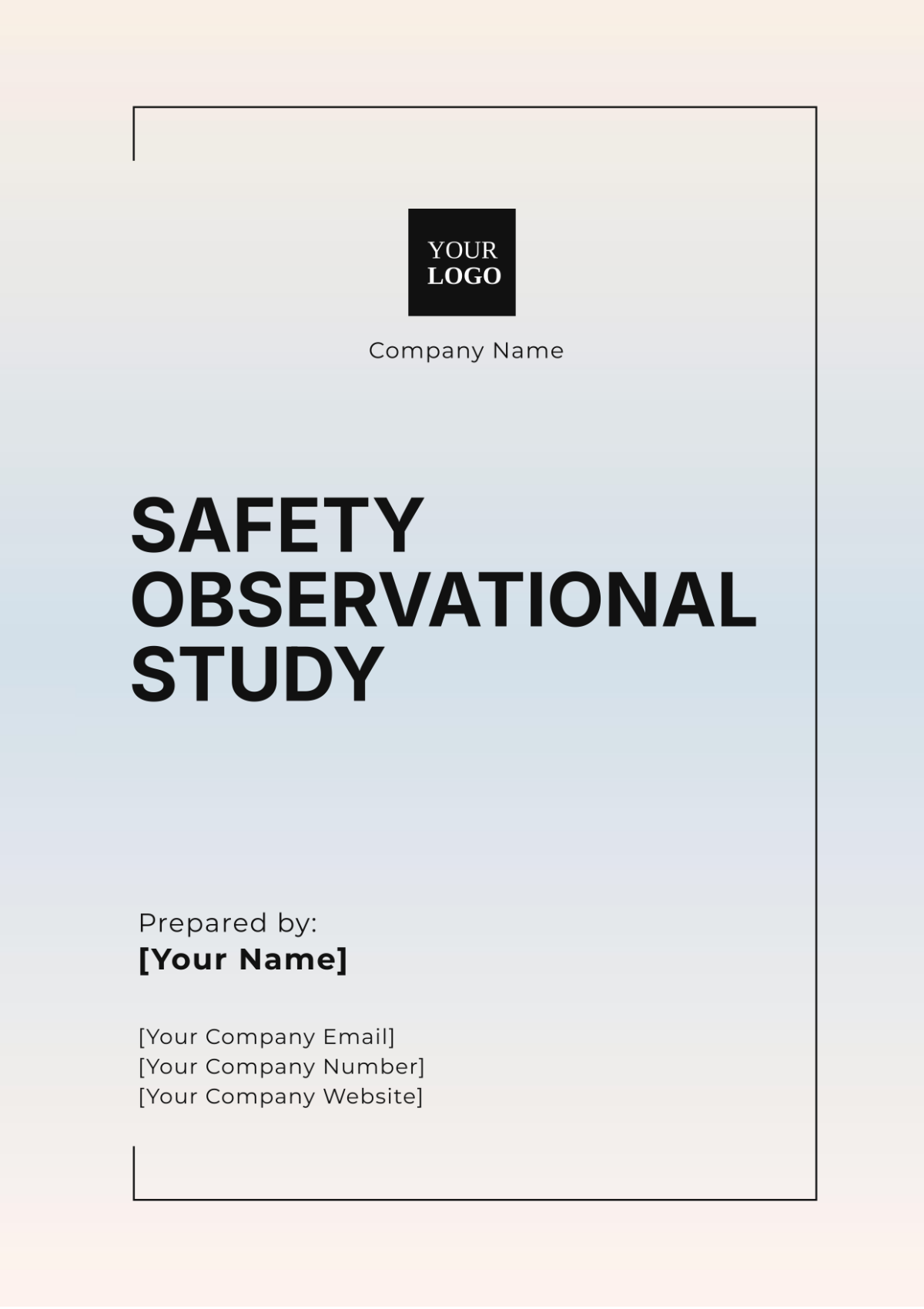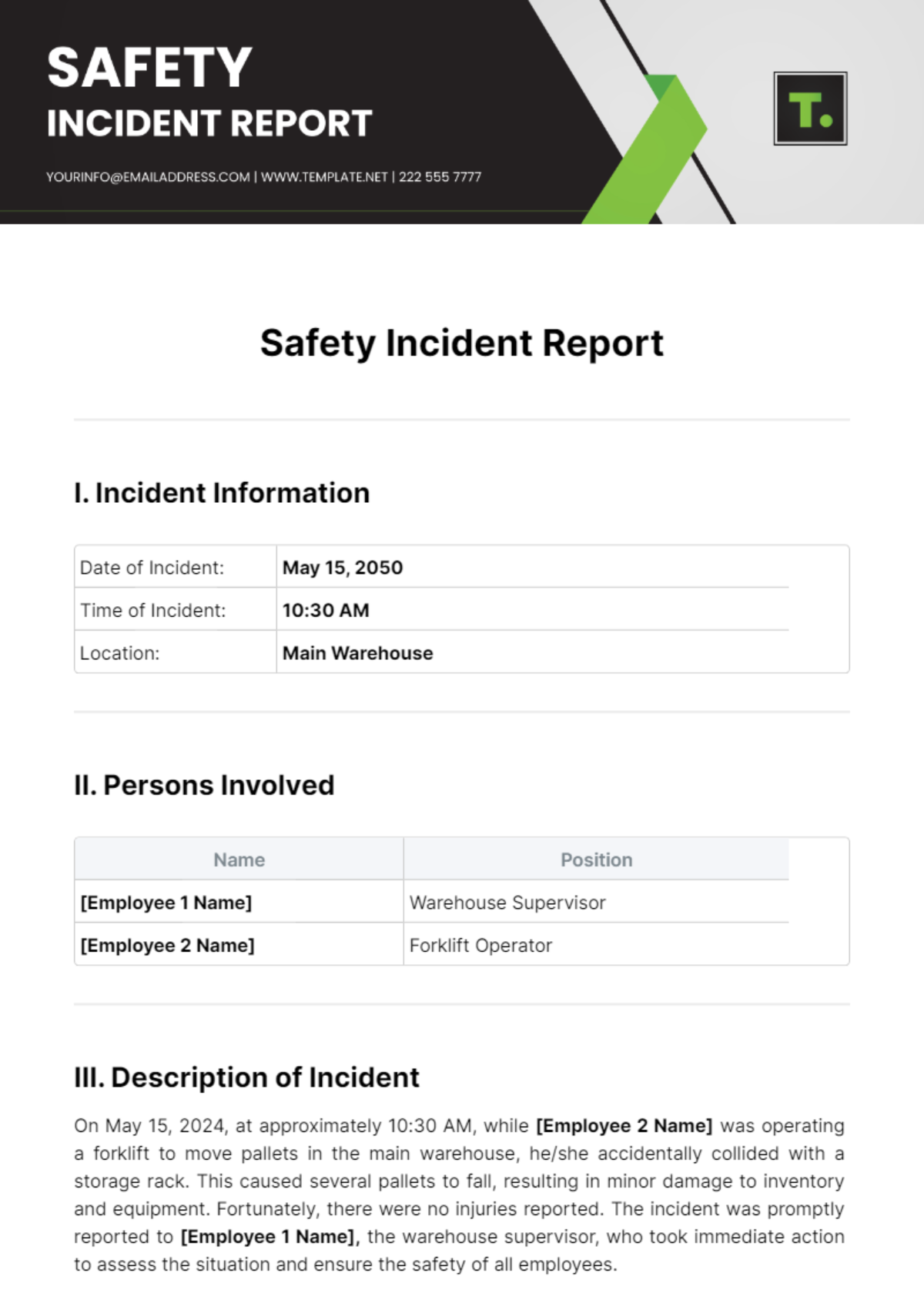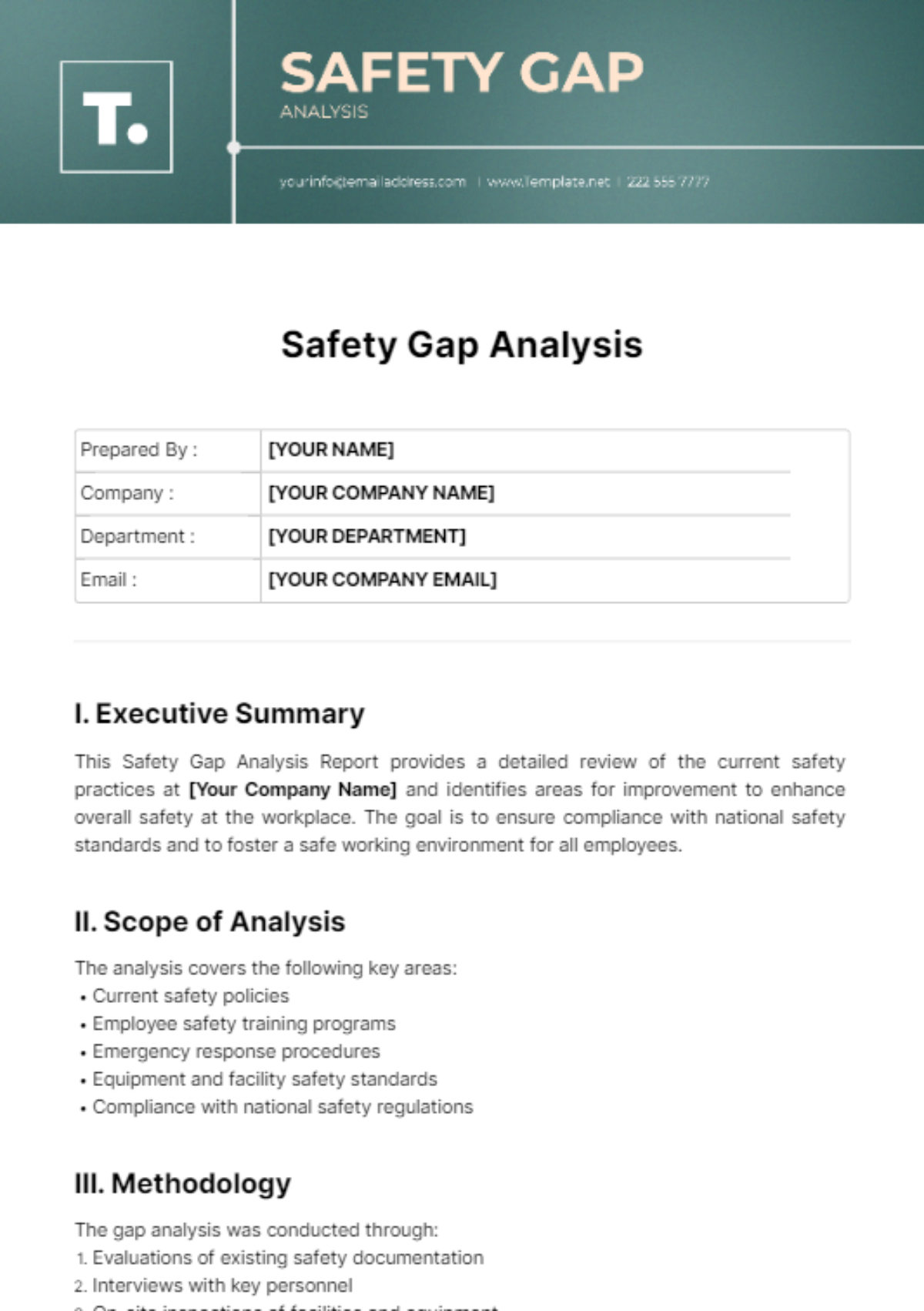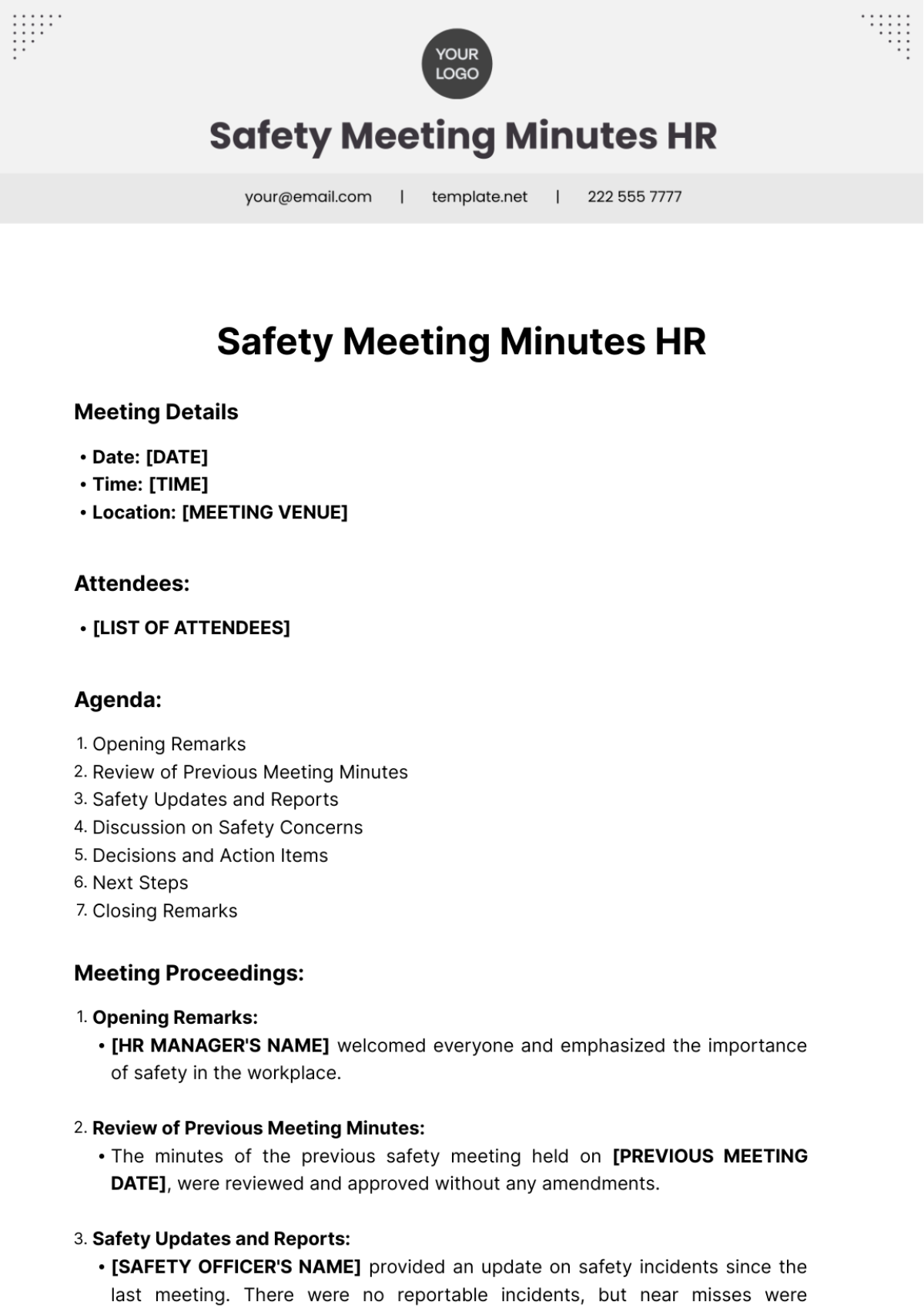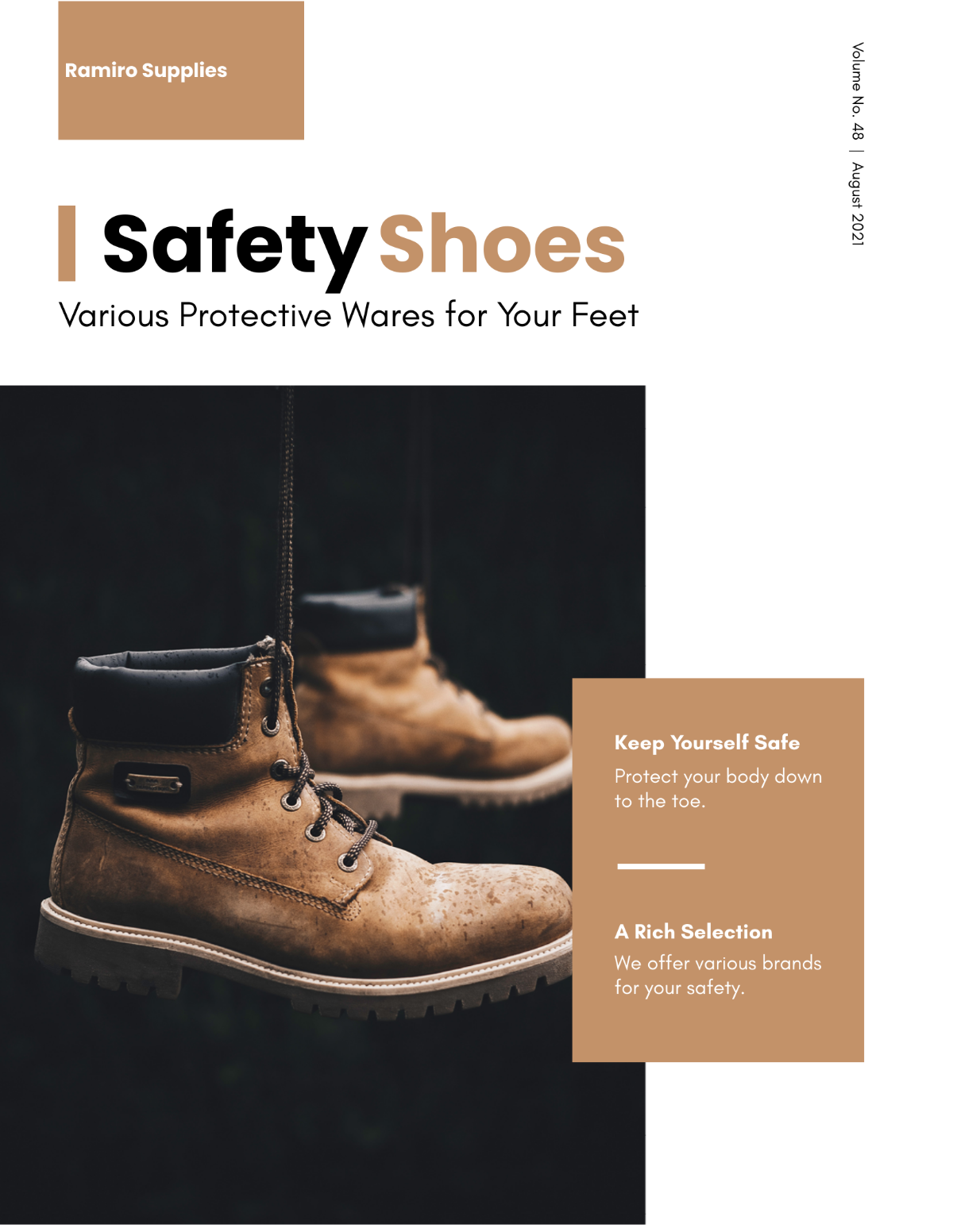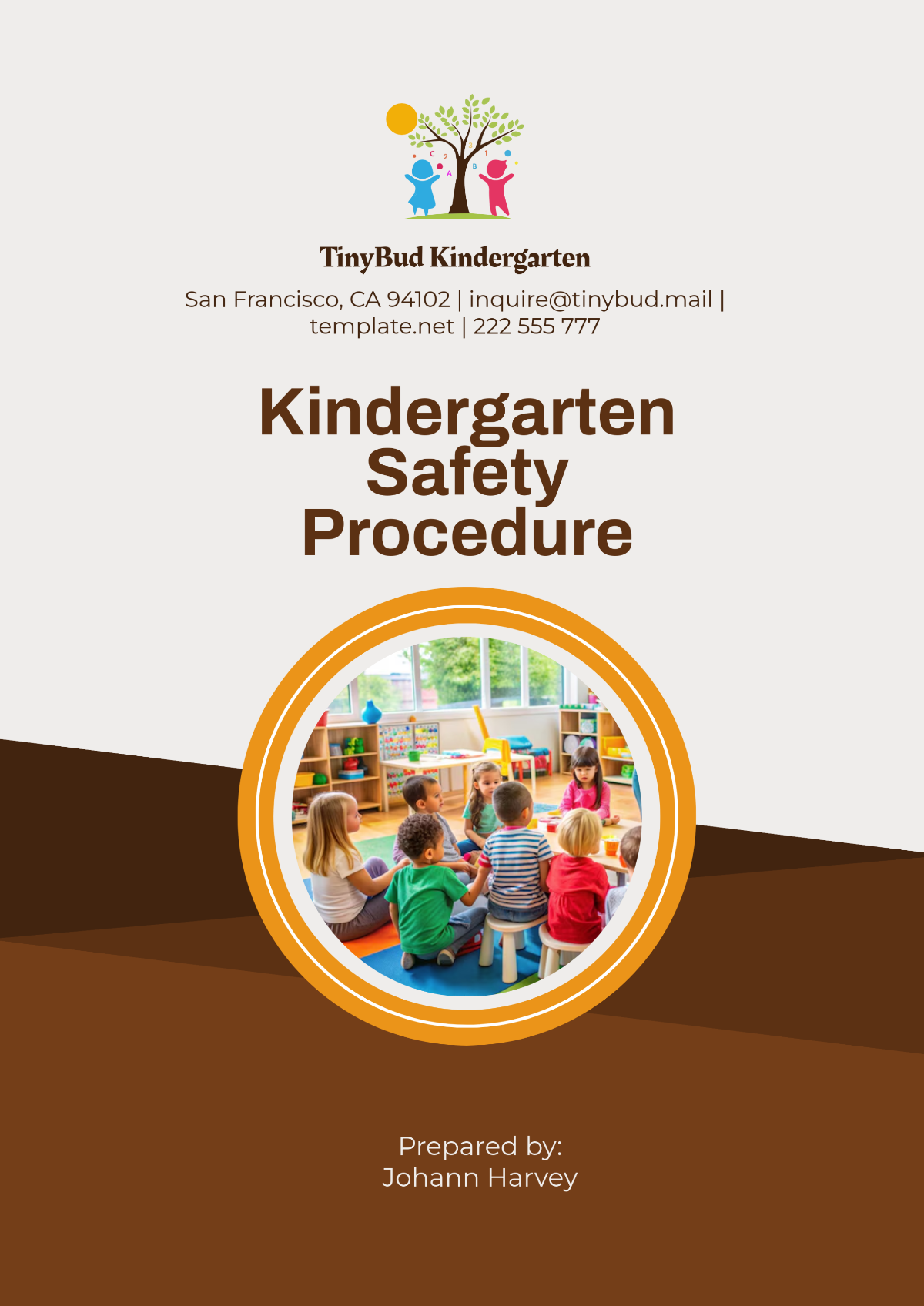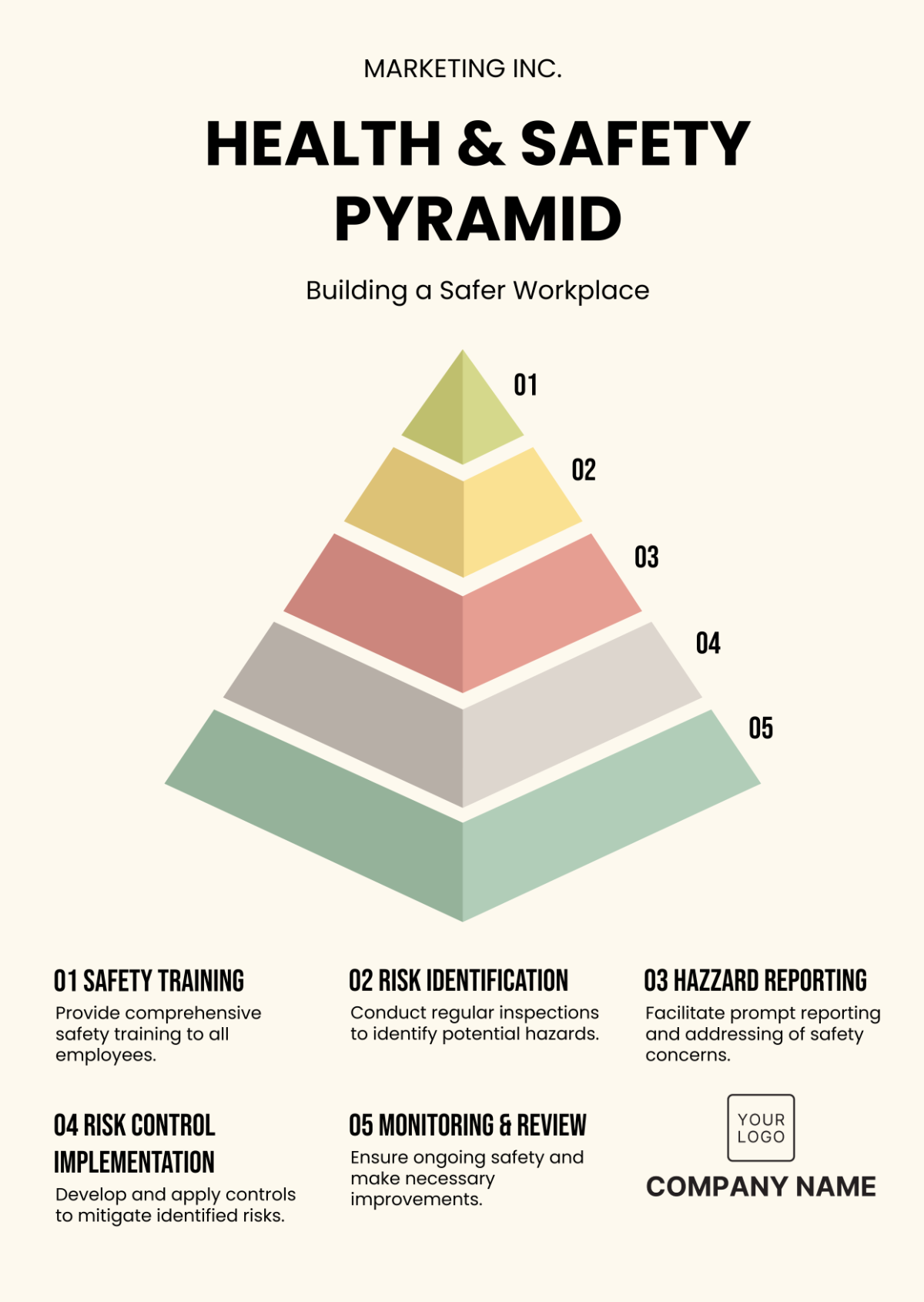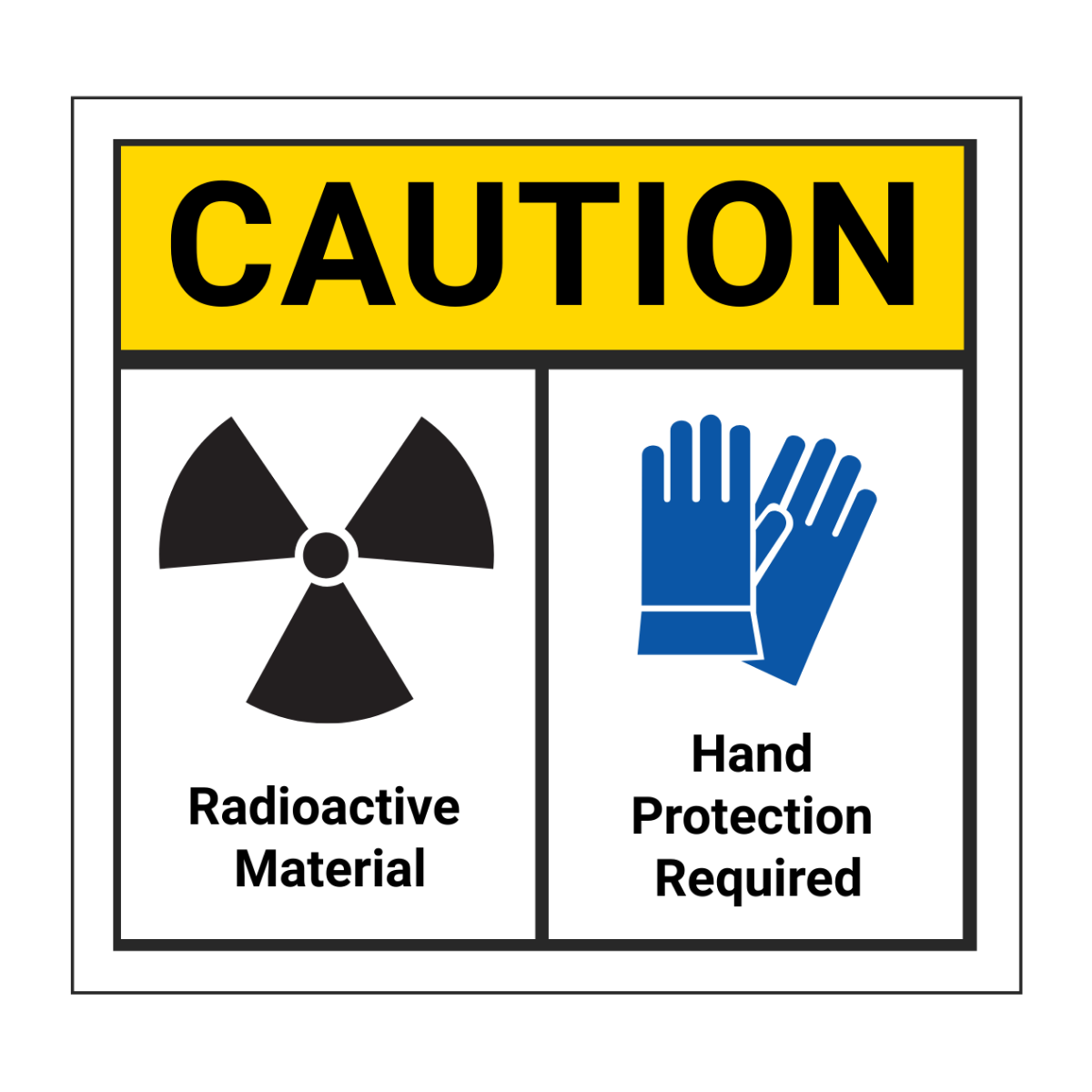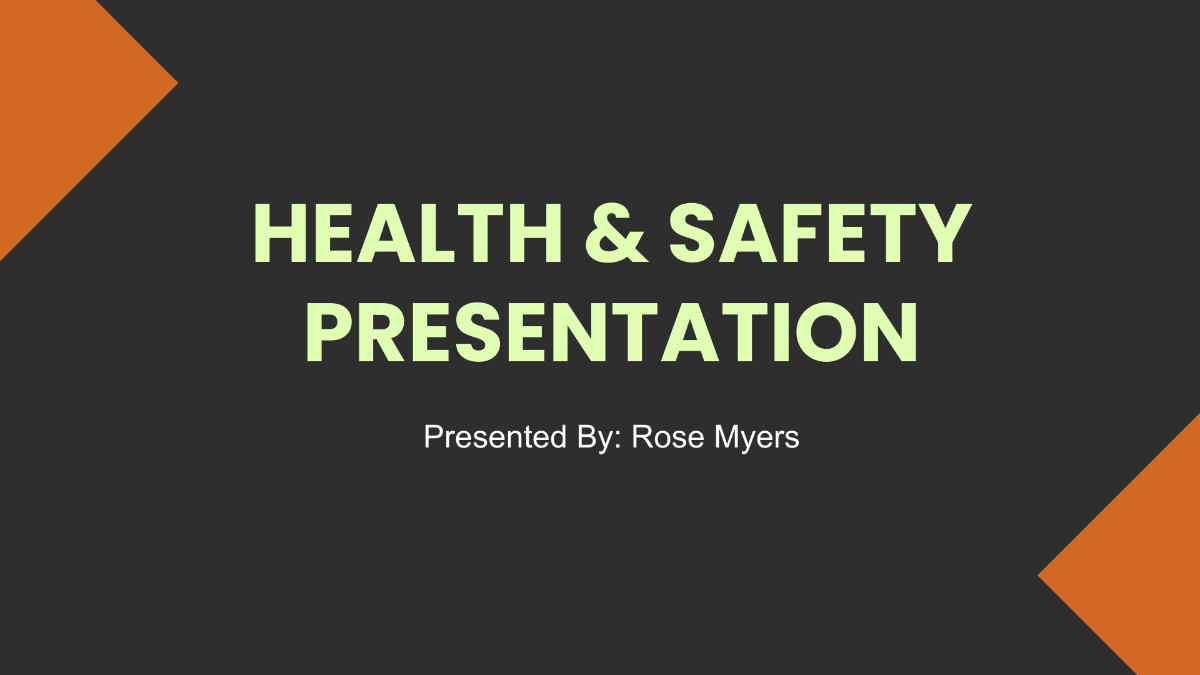Safety Protocol Development
I. Introduction
A. Overview
As a company committed to prioritizing the health and safety of our employees, we recognize the importance of having well-defined and standardized safety protocols in place. This Safety Protocol Development document serves as a guide to establish systematic procedures that ensure a safe and secure working environment for all members of our company. By formalizing safety measures, we aim to prevent incidents, protect the well-being of our workforce, and uphold compliance with regulatory requirements.
B. Purpose
The purpose of this Safety Protocol Development initiative is to create a structured framework that outlines clear and actionable procedures for responding to potential hazards, emergencies, and routine safety scenarios. These protocols are designed to be proactive, empowering individuals at all levels to navigate a variety of safety situations with confidence and efficiency. Standardizing safety procedures not only enhances the effectiveness of our safety measures but also contributes to a consistent and resilient safety culture within our company.
II. Objectives
The primary goals of this Safety Protocol Development effort are as follows:
A. Prevent Incidents
Develop procedures to identify, assess, and mitigate potential hazards, minimizing the occurrence of workplace incidents.
B. Ensure Employee Well-being
Implement protocols that prioritize the safety and well-being of our employees in various work scenarios.
C. Compliance
Establish procedures that align with regulatory requirements and industry standards, ensuring legal compliance and adherence to best practices.
D. Efficiency
Streamline safety responses by providing clear, step-by-step guidance, reducing the time it takes to address safety issues effectively.
E. Continuous Improvement
Foster a culture of continuous improvement by regularly reviewing and updating safety protocols to address emerging risks and maintain relevance.
III. Responsibilities
In fostering a culture of safety, clearly defined roles and responsibilities are paramount for the effective implementation of our safety protocols. Each member of our company plays a crucial role in ensuring the success of these measures. The following table outlines the names, primary roles and their associated responsibilities, serving as a guide for accountability and collaboration in maintaining a safe and secure workplace.
Name | Role | Responsibilities |
[Employee Name] | Safety Officer | Oversee the overall implementation and effectiveness of safety protocols. |
[Employee Name] | Emergency Coordinator | Coordinate emergency response efforts and communication during crises. |
[Employee Name] | Department Heads | Ensure employees within their departments are trained on and adhere to safety protocols. |
[Employee Name] | Employees | Follow safety protocols, report incidents, and actively participate in safety training programs. |
These roles are interdependent, forming a robust safety ecosystem where communication, coordination, and individual responsibility are key. The Safety Officer, as the overseer, ensures that safety protocols are effectively implemented and continuously improved. The Emergency Coordinator takes charge of coordinating responses during crises, ensuring a swift and organized reaction. Department Heads play a critical role in ensuring that safety measures are ingrained within their respective departments, while every employee contributes to the collective success by following protocols, reporting incidents, and actively engaging in safety training programs.
IV. Procedure
In reinforcing our commitment to workplace safety, specific guidelines are essential to guide our actions in various safety scenarios. The following list outlines detailed procedures for general safety practices, covering hazard identification and assessment, incident reporting, emergency evacuation, and personal protective equipment (PPE) usage.
A. Hazard Identification and Assessment
Identify and Document Hazards
Perform regular walkthroughs of work areas to identify potential hazards. Use a standardized checklist to document identified hazards.
Assess Severity and Likelihood
Evaluate the severity and likelihood of each identified hazard. Utilize a risk matrix to categorize hazards based on their potential impact.
Prioritize Hazards
Establish a prioritization system based on the risk level of each hazard. Prioritize corrective actions for high-risk hazards.
B. Incident Reporting
Prompt Reporting
Report all incidents, near misses, or potential hazards promptly. Use the designated incident reporting form.
Anonymity and Open Reporting
Ensure anonymity in the reporting process to encourage open communication. Employees should feel comfortable reporting without fear of reprisal.
Detailed Documentation
Provide detailed information in incident reports, including date, time, location, individuals involved, and a description of the incident or hazard.
C. Emergency Evacuation
Establish Evacuation Routes
Designate clear evacuation routes in all work areas. Ensure these routes are easily accessible and well-lit.
Define Assembly Points
Identify assembly points outside the building where employees should gather after evacuation. Ensure these points are safe and away from potential hazards.
Conduct Regular Drills
Schedule regular emergency evacuation drills to familiarize employees with evacuation procedures. Use these drills to identify areas for improvement.
D. Personal Protective Equipment (PPE) Usage
Conduct PPE Assessments
Assess the PPE requirements for each job role. Consider tasks that may expose employees to hazards.
Provide Necessary PPE
Ensure that the necessary PPE is provided to employees. This may include safety glasses, gloves, helmets, or other specialized equipment.
Training on PPE Usage
Conduct training sessions to educate employees on the proper usage and maintenance of PPE. Emphasize the importance of using PPE consistently.
V. Communication Plan
A. Communication Channels
Utilize Diverse Channels
Use a combination of email, internal messaging systems, and notice boards for routine communication.
Designate Emergency Channels
Clearly define specific channels for emergency communication. Ensure all employees are aware of these channels.
Accessibility
Ensure that communication is clear, concise, and easily accessible to all employees, irrespective of their role or department.
B. Emergency Communication
Designate Emergency Contact Persons
Identify and communicate emergency contact persons within the company.
Implement Notification Systems
Utilize emergency notification systems for rapid dissemination of critical updates.
Regular Drills
Conduct regular emergency communication drills to assess the efficiency and effectiveness of the system.
VI. Training and Awareness
A. Training Needs Assessment
Identify Specific Safety Training Requirements
Tailor safety training programs based on the unique requirements of each department.
Assess Proficiency Levels
Evaluate the proficiency levels of employees in various safety procedures through assessments.
Develop Tailored Training Programs
Design training programs that address identified gaps and provide practical, hands-on experience.
B. Training Delivery
Regular Training Sessions
Conduct regular safety training sessions for all employees.
Utilize Varied Training Methods
Incorporate diverse training methods, including hands-on exercises, simulations, and multimedia presentations.
Monitor Attendance and Participation
Keep track of attendance and participation to ensure that all employees receive the required training.
VII. Equipment and Resources
A. Maintenance
Maintenance Calendar
Establish a regular maintenance calendar outlining specific dates for equipment checks and servicing.
Safety Equipment
Ensure that the maintenance schedule covers all safety equipment, including fire extinguishers, emergency lights, first aid kits, and personal protective equipment (PPE).
Document Maintenance Activities
Maintain detailed records of all maintenance activities, including dates, types of maintenance performed, and any issues addressed.
B. Resource Allocation
Budget for Safety Equipment
Allocate a dedicated budget for the procurement, maintenance, and replacement of safety equipment.
Resource Allocation Prioritization
Prioritize resource allocation based on risk assessments. Allocate more resources to areas with higher safety risks.
Resource Needs Review
Conduct regular reviews of safety resource needs and adjust the budget accordingly.
VIII. Review and Revision
A. Review Schedule
To uphold the integrity of our safety protocols, a systematic approach to regular reviews is crucial. Safety Officers will oversee an annual review, systematically assessing the strengths and weaknesses of our existing safety measures. This structured timeline ensures that our protocols remain current and responsive to evolving workplace dynamics and potential hazards.
B. Input from Stakeholders
Our commitment to inclusivity extends to the review process. Actively seeking input from employees, department heads, and other stakeholders enriches the evaluation process. By incorporating diverse perspectives, we ensure that our safety protocols address the unique needs and challenges faced by various departments and individuals across the company.
C. Review Findings
Comprehensive documentation is fundamental to the review process. Safety Officers will meticulously record the outcomes of the review, detailing identified strengths, weaknesses, and any recommendations for improvement. This documentation serves as a valuable resource for shaping future safety initiatives and enhancing the overall effectiveness of our safety protocols.
IX. Documentation and Record-Keeping
A. Record-Keeping
Accurate and detailed record-keeping is integral to the success of our safety protocols. This section outlines the procedures for maintaining thorough documentation of incidents, training records, and other critical information.
B. Incident Documentation
To establish a comprehensive incident database, Safety Officers will diligently document all incidents, near misses, and hazard assessments. This centralized repository will include detailed information on incident investigations, resolutions, and any preventive measures implemented. Regular audits of incident documentation will ensure accuracy and completeness.
C. Training Records
The Training Department will be responsible for recording attendance and participation in training programs, ensuring that individual proficiency levels and areas for improvement are well-documented. Accessible and up-to-date training records contribute to the effectiveness of our safety protocols by confirming that employees are adequately trained and knowledgeable about relevant safety procedures.
D. Documentation Accessibility
Both safety and training documentation should be readily accessible to authorized personnel. Safety Officers and the Training Department will collaborate to establish a secure and organized system for storing and retrieving essential documents. This accessibility ensures that information is readily available for audits, reviews, and continuous improvement initiatives.
X. Legal and Regulatory Compliance
A. Regulatory Updates
Staying informed about changes in regulations is crucial to maintaining compliance. The Compliance Officer will establish a systematic process for monitoring updates from relevant regulatory bodies. Regular communication and training sessions will be conducted to disseminate information on regulatory changes and their implications for our safety protocols.
B. Audits and Assessments
Scheduled safety audits are vital for assessing compliance with safety protocols. The Compliance Officer will lead regular audits, documenting findings, and recommending corrective actions. These audits will not only serve as a measure of compliance but also as an opportunity for continuous improvement in our safety practices.
